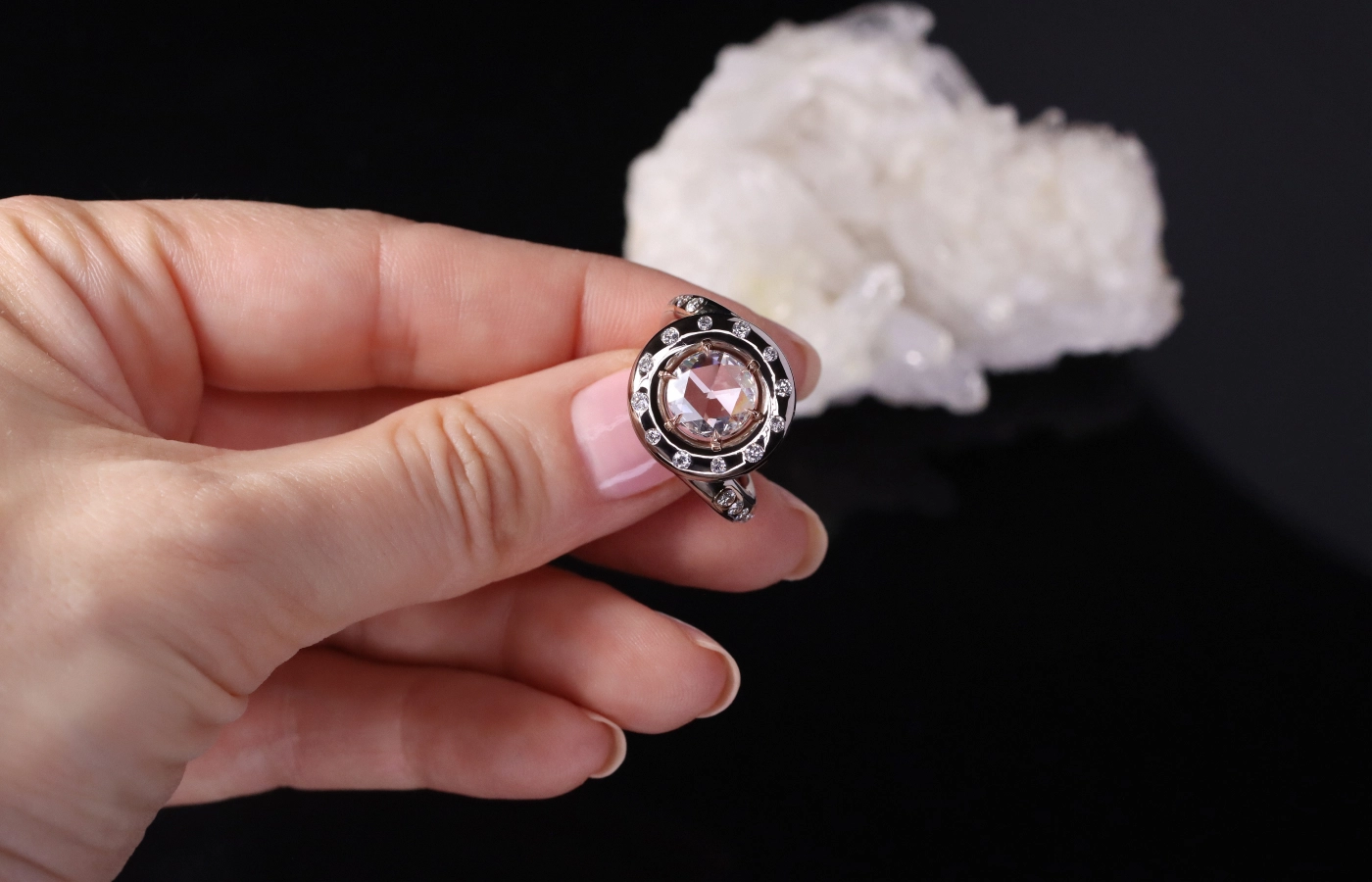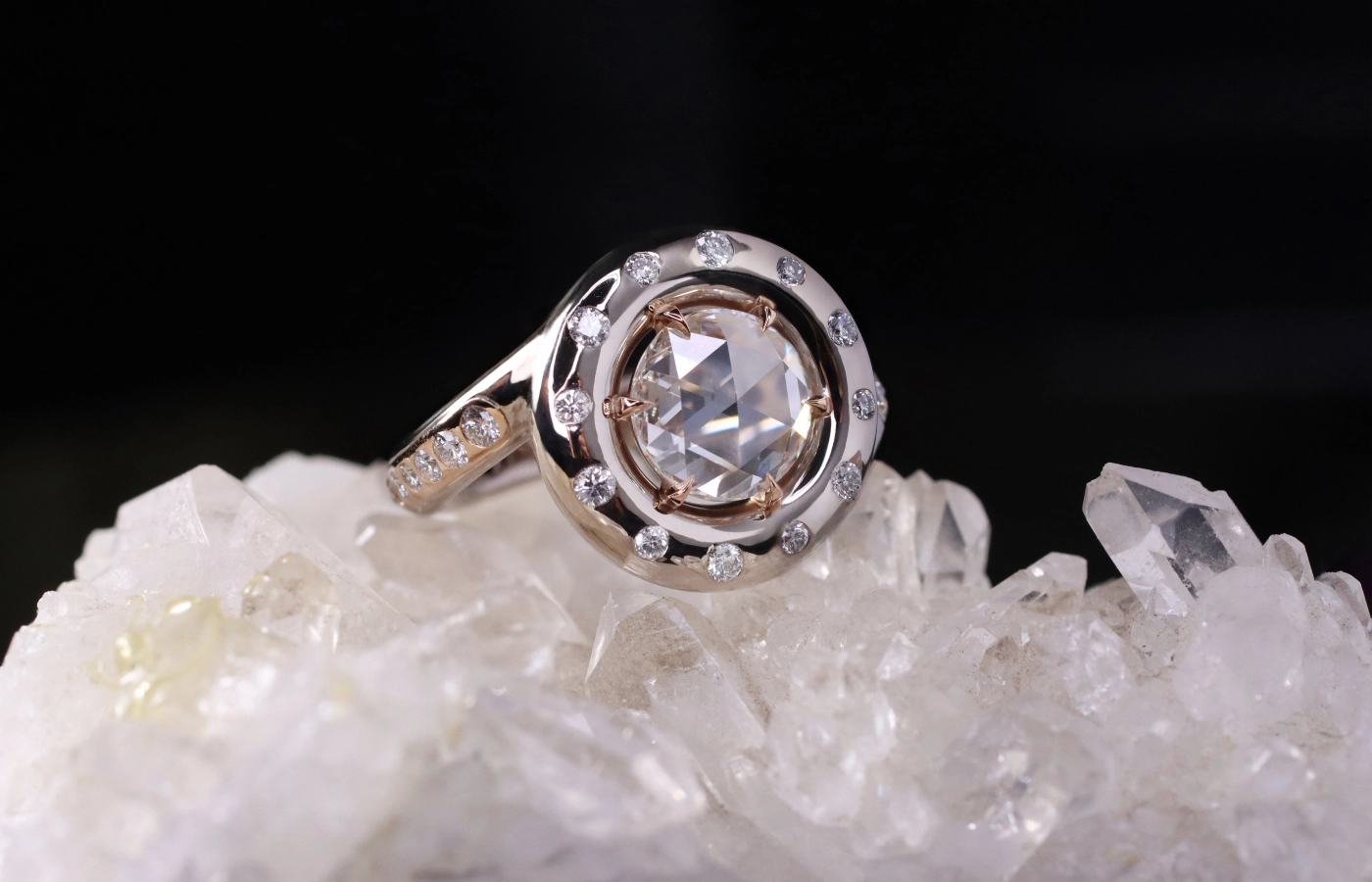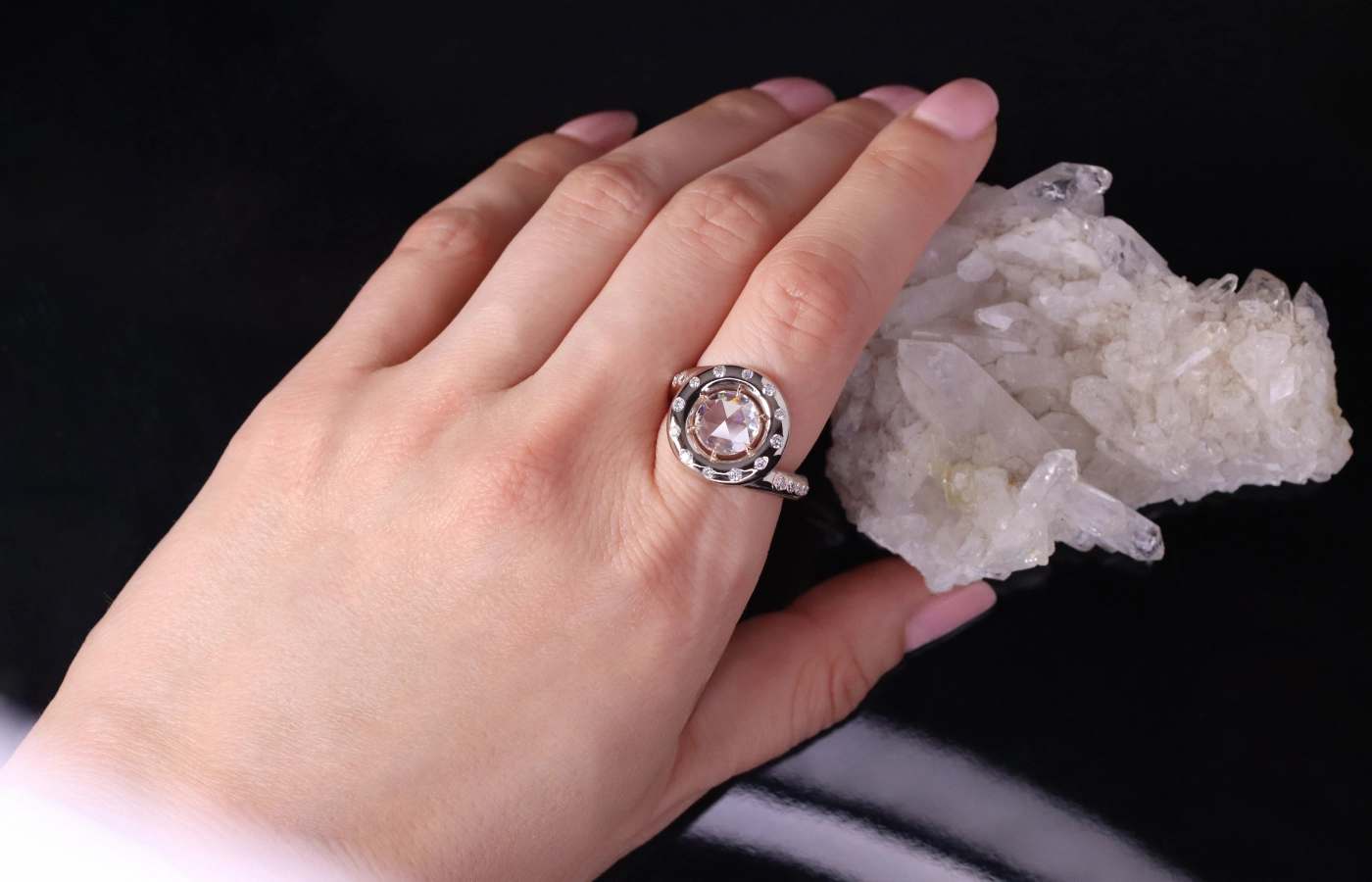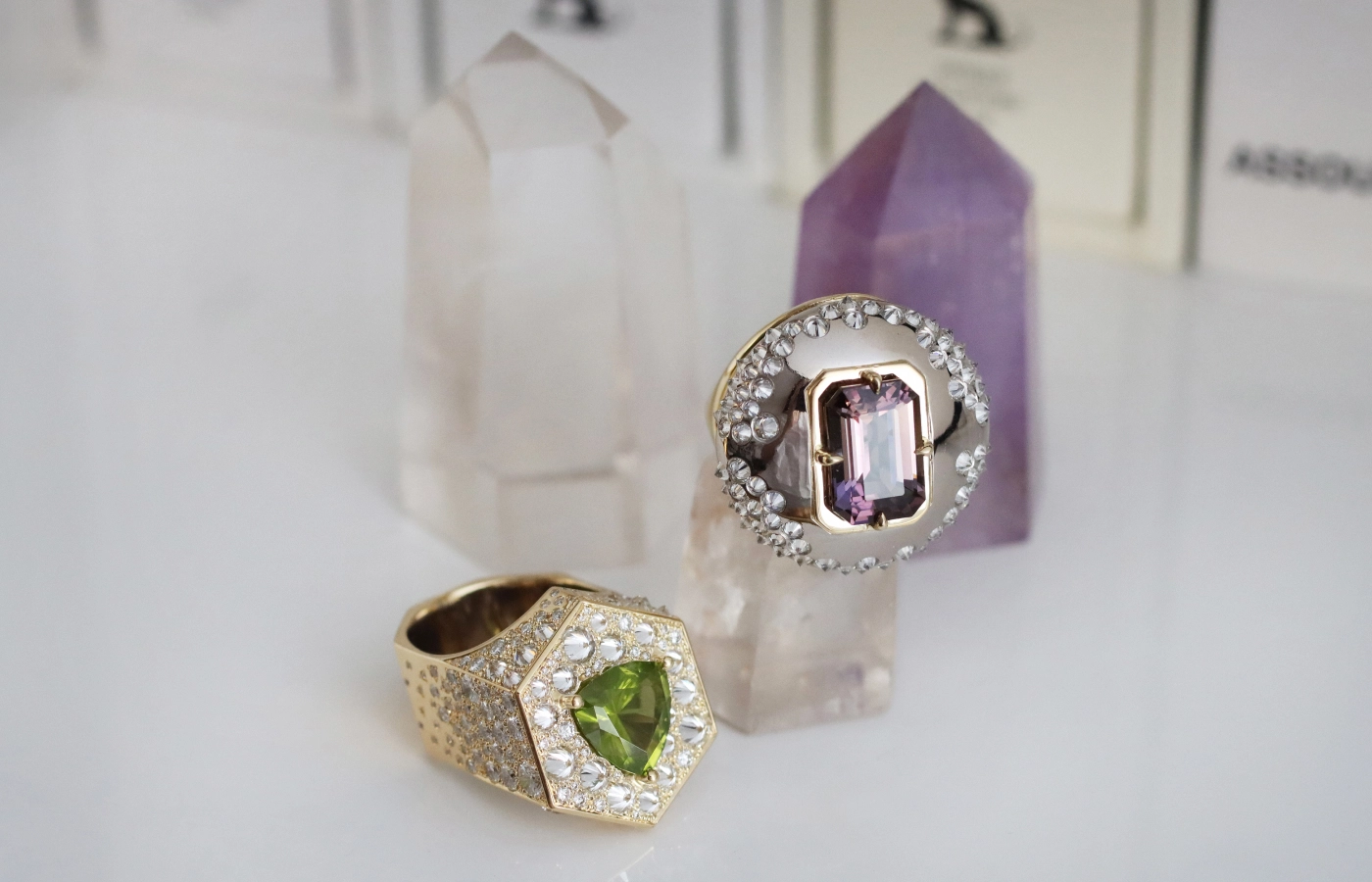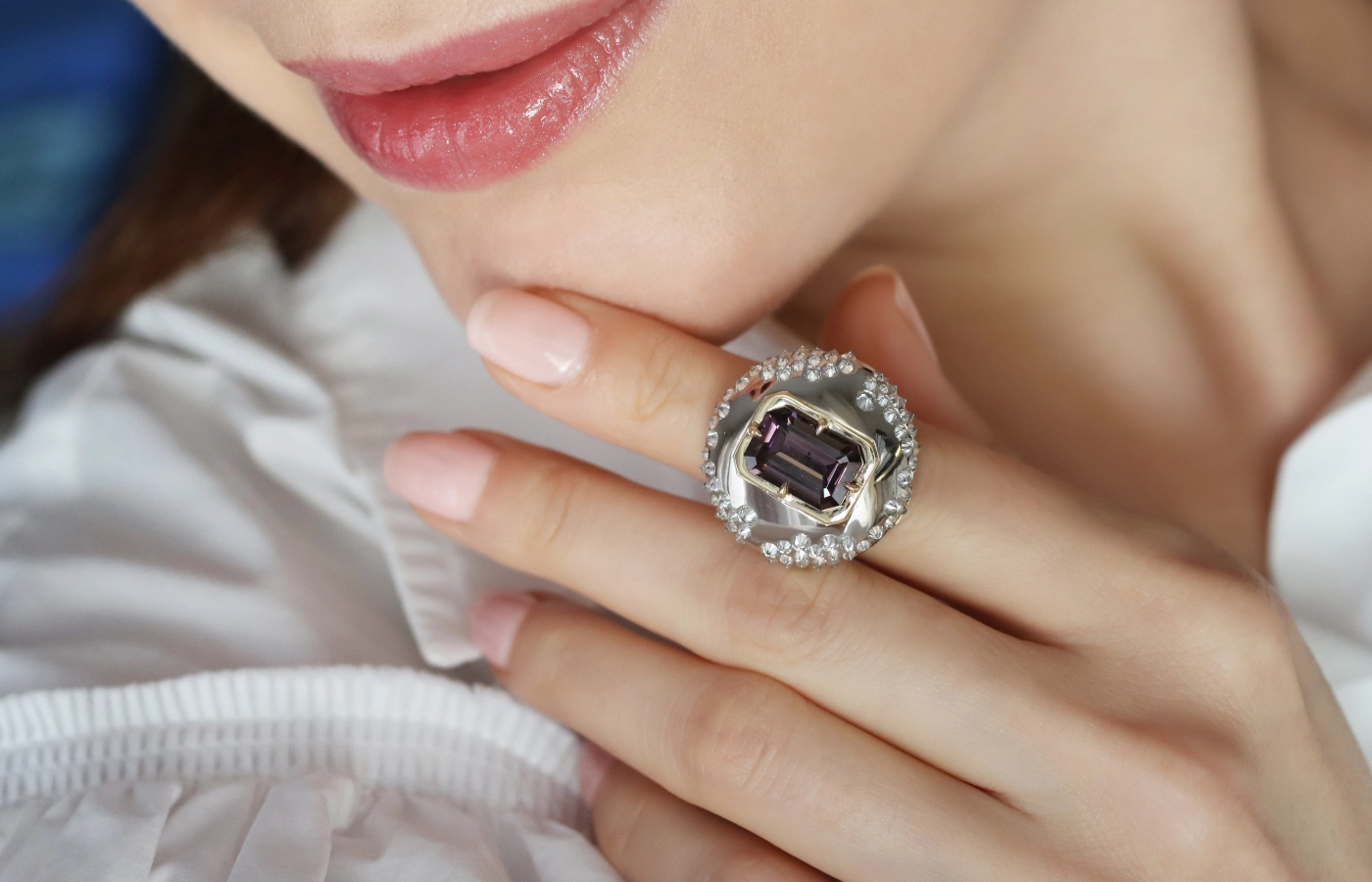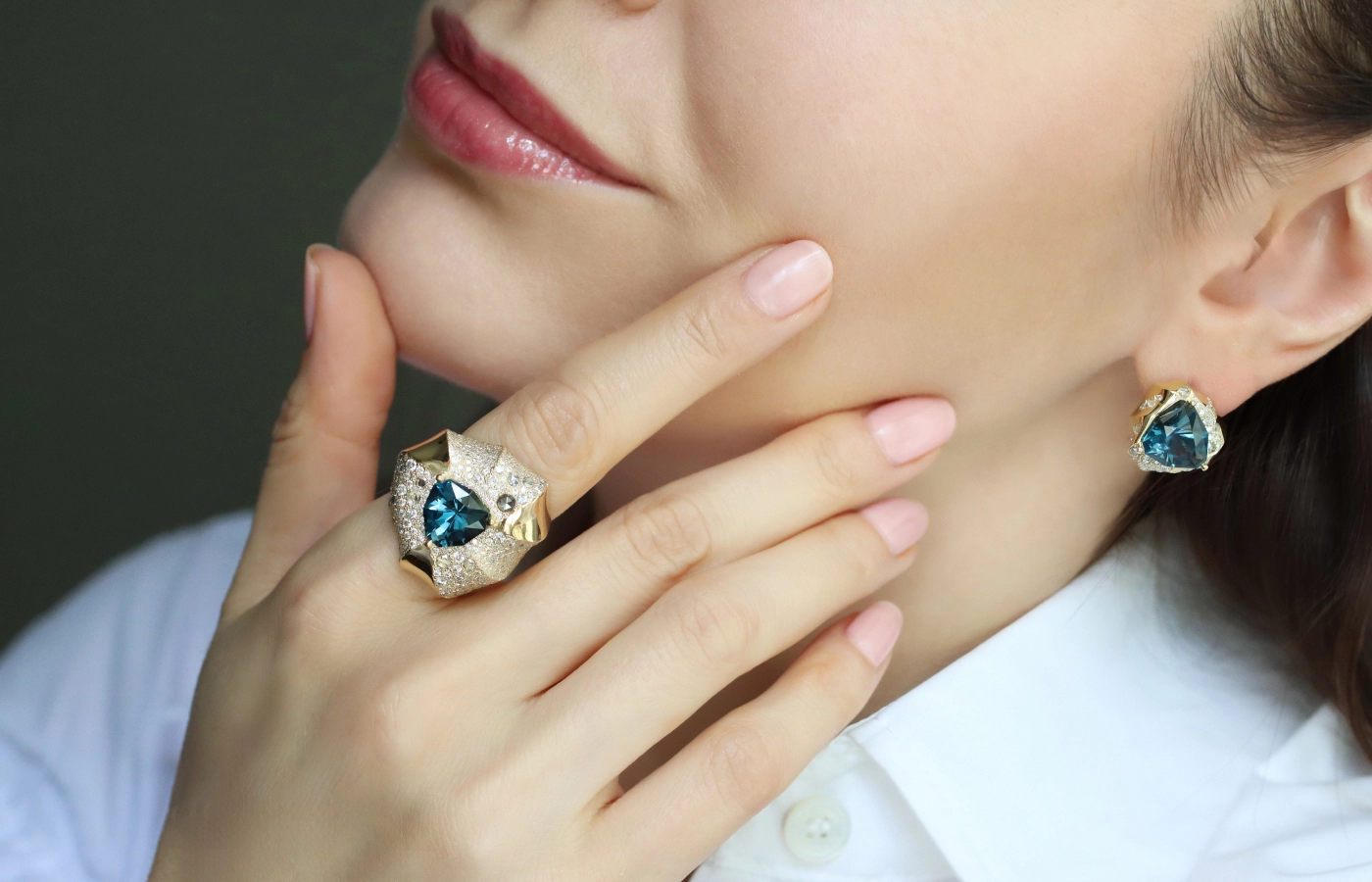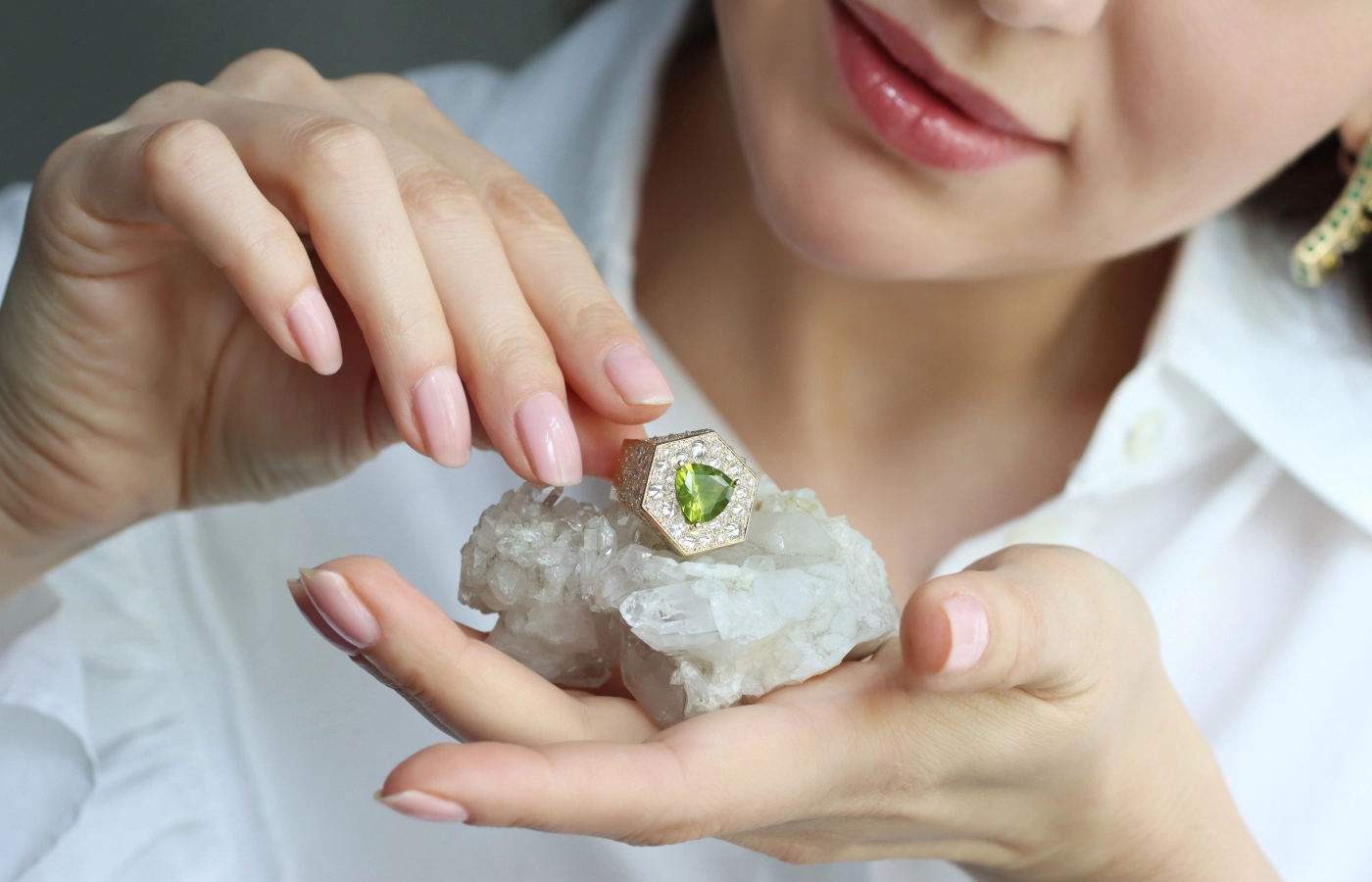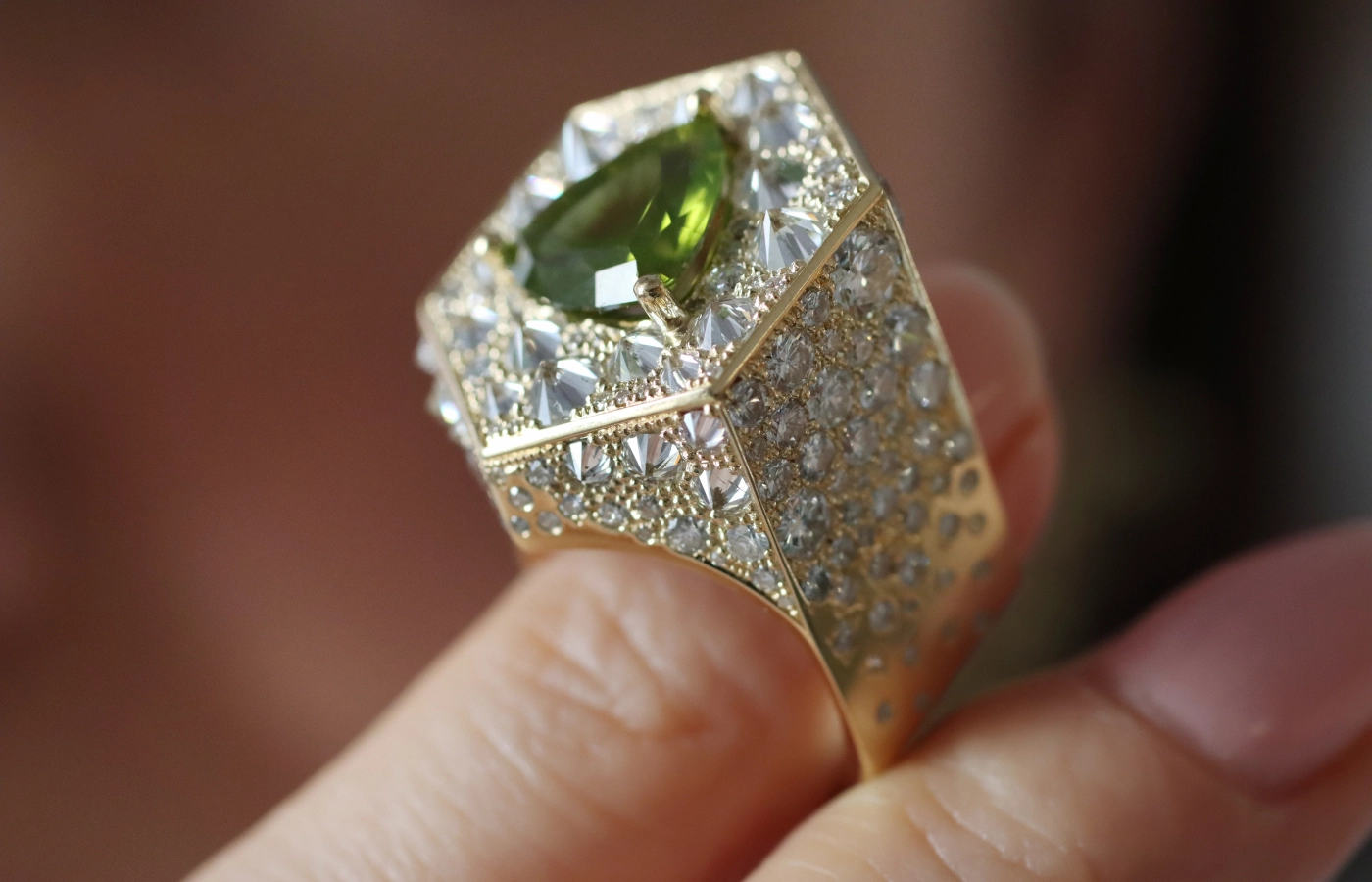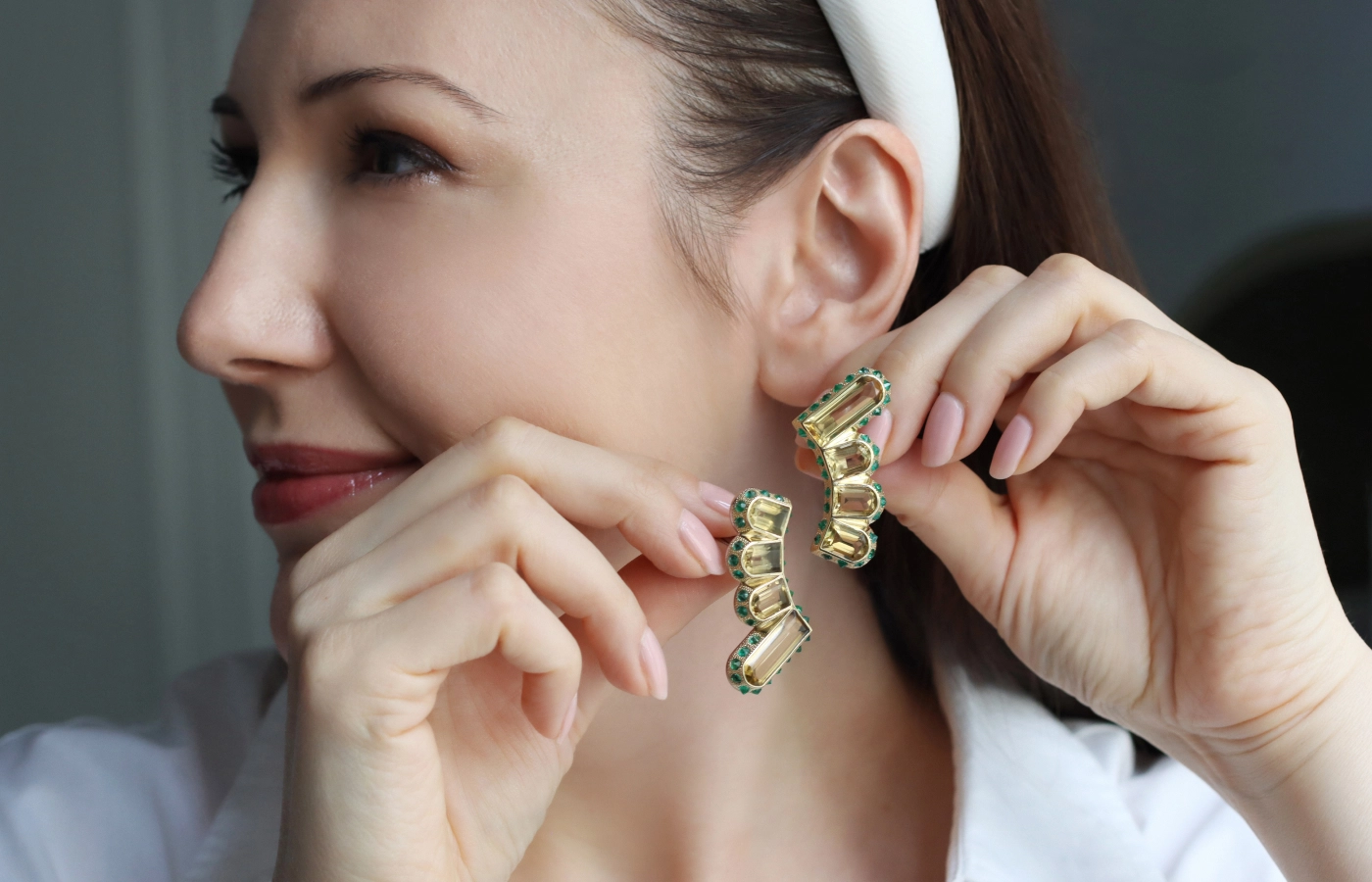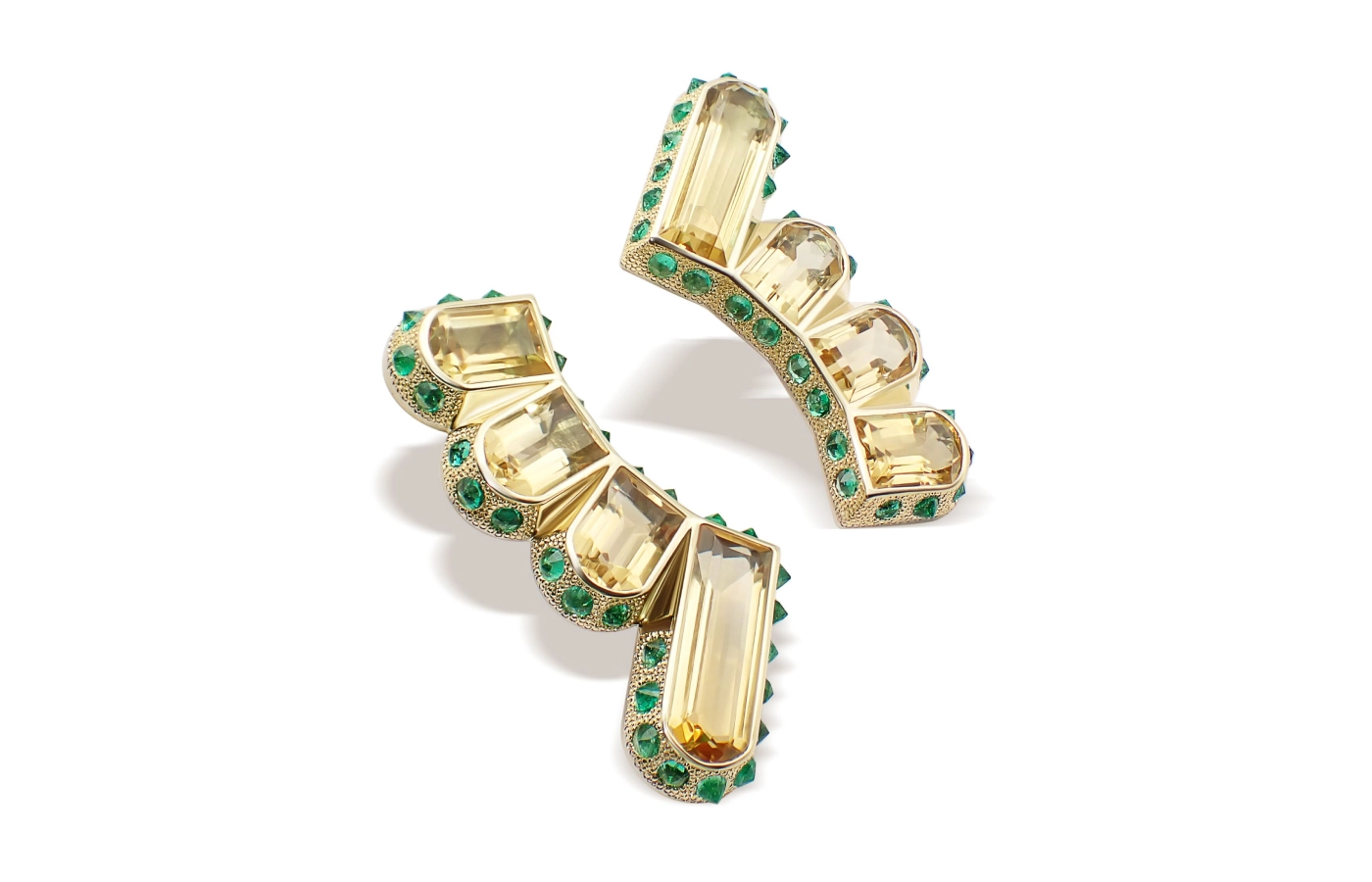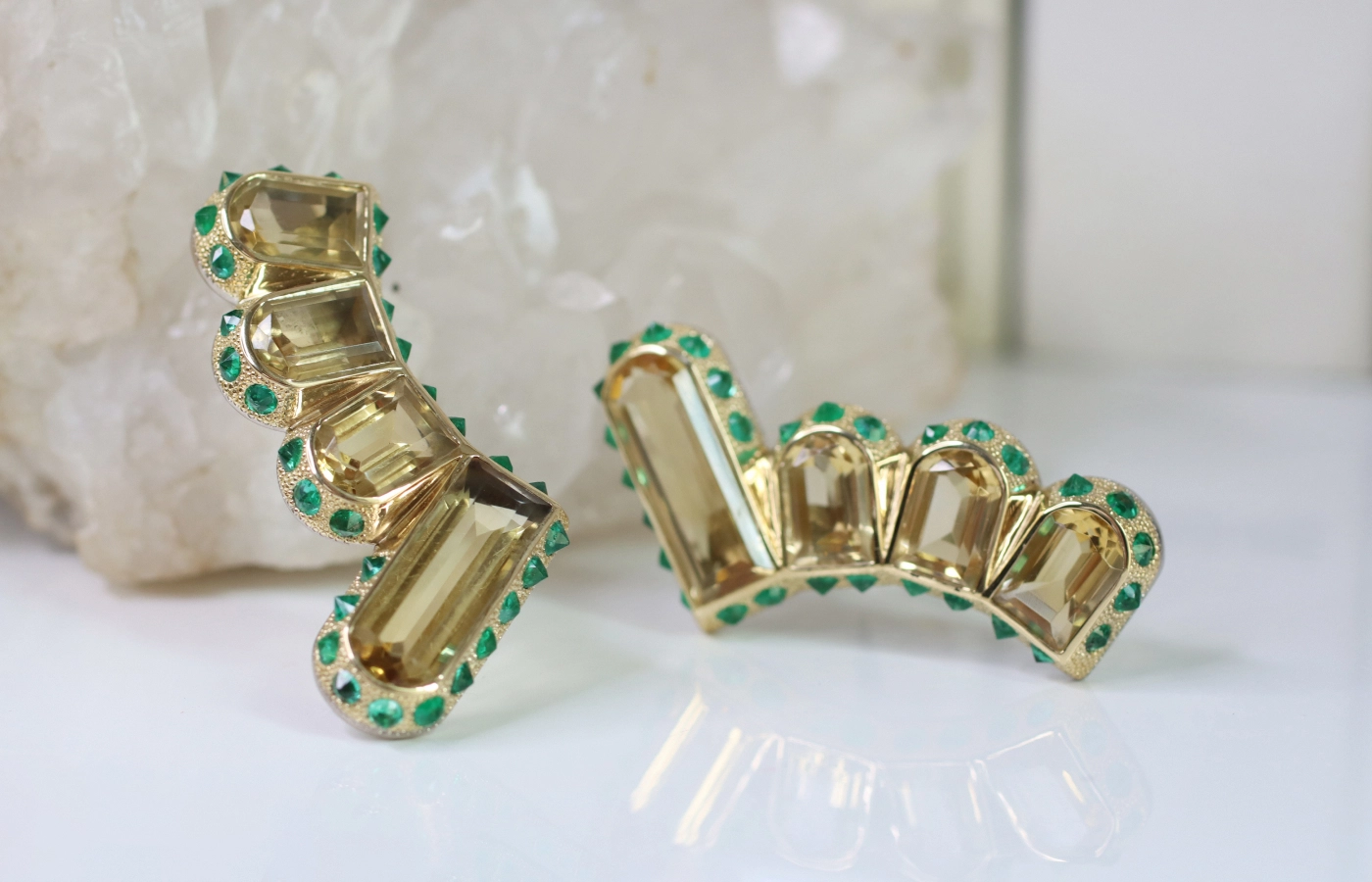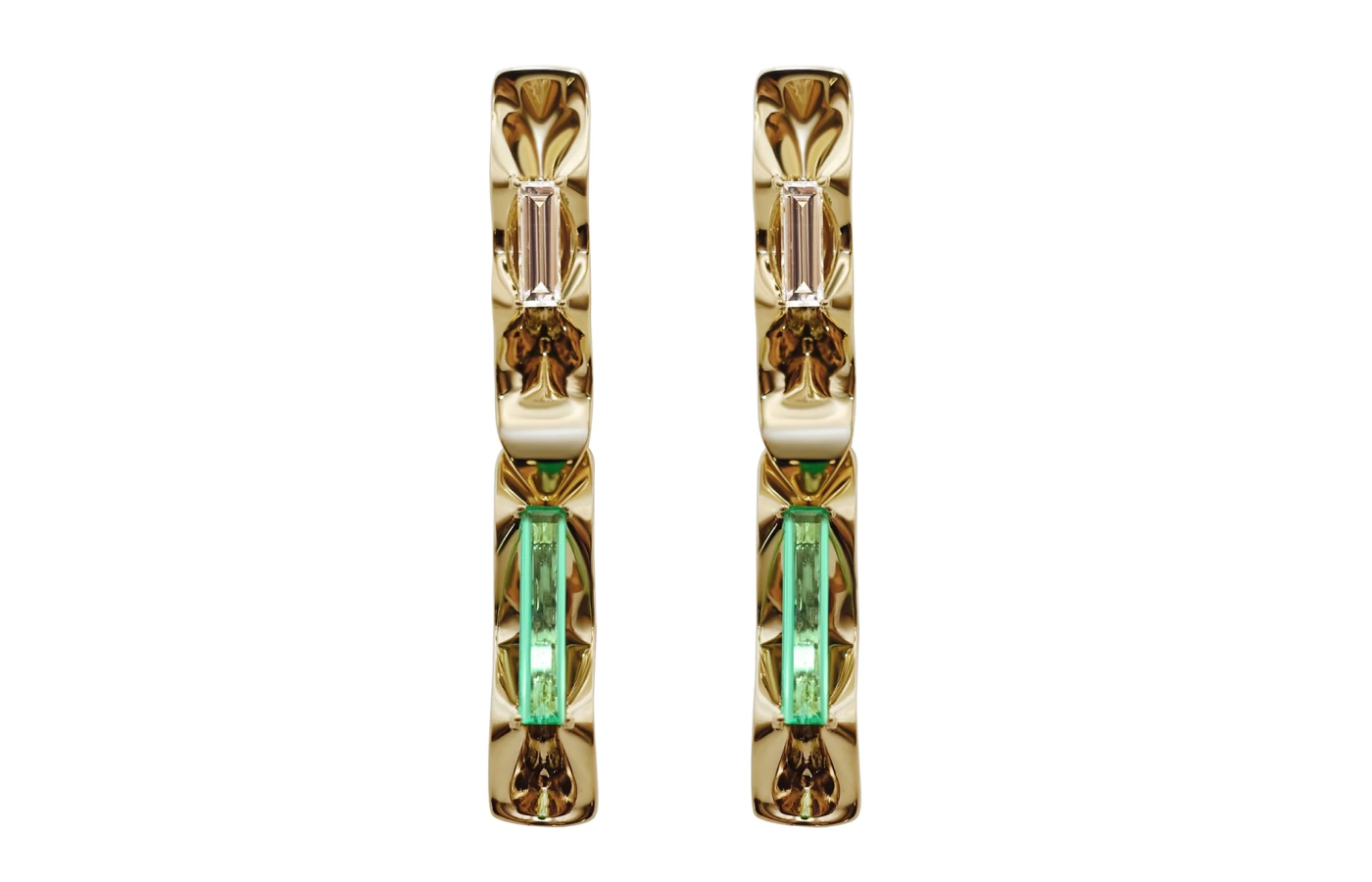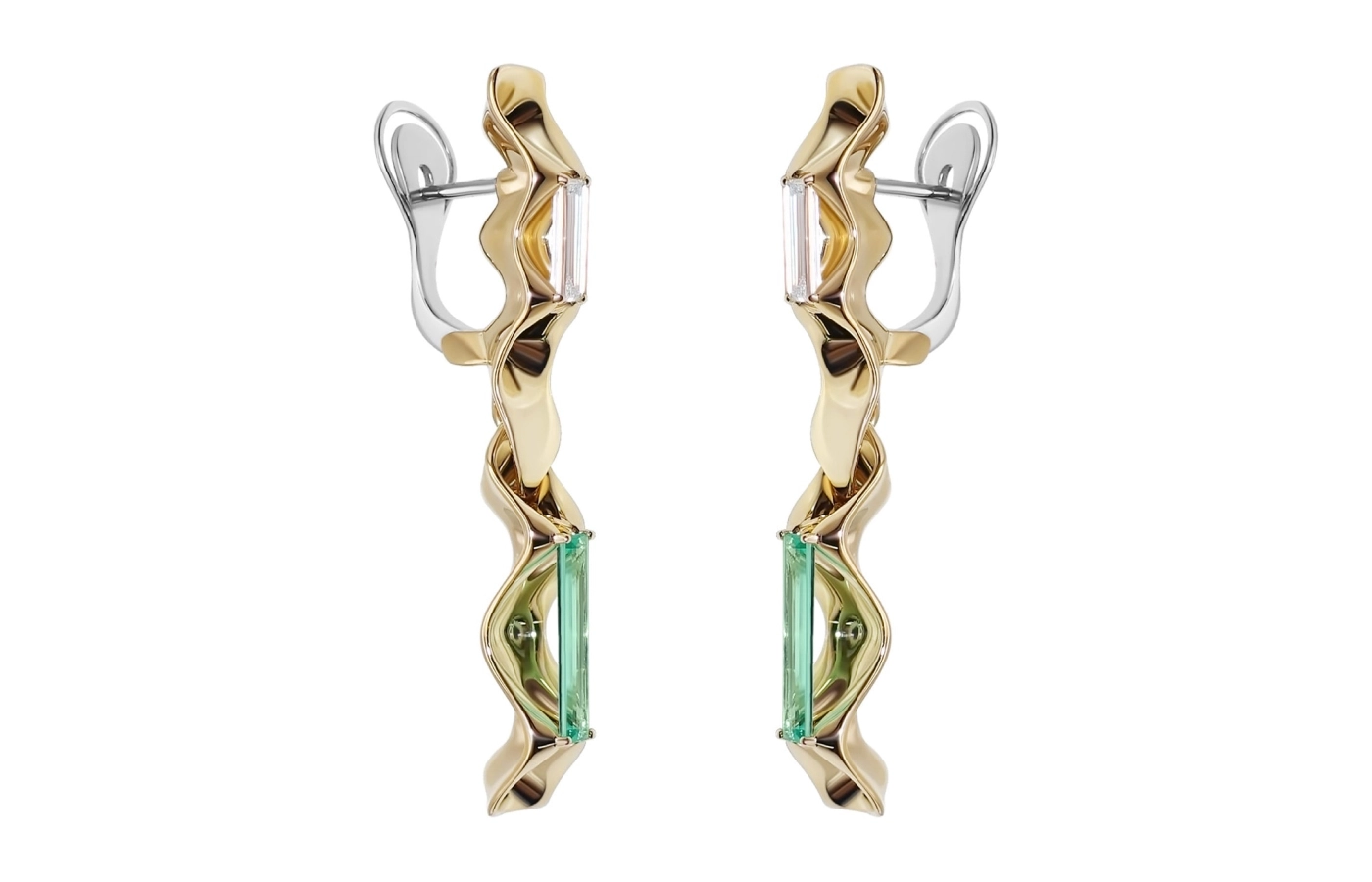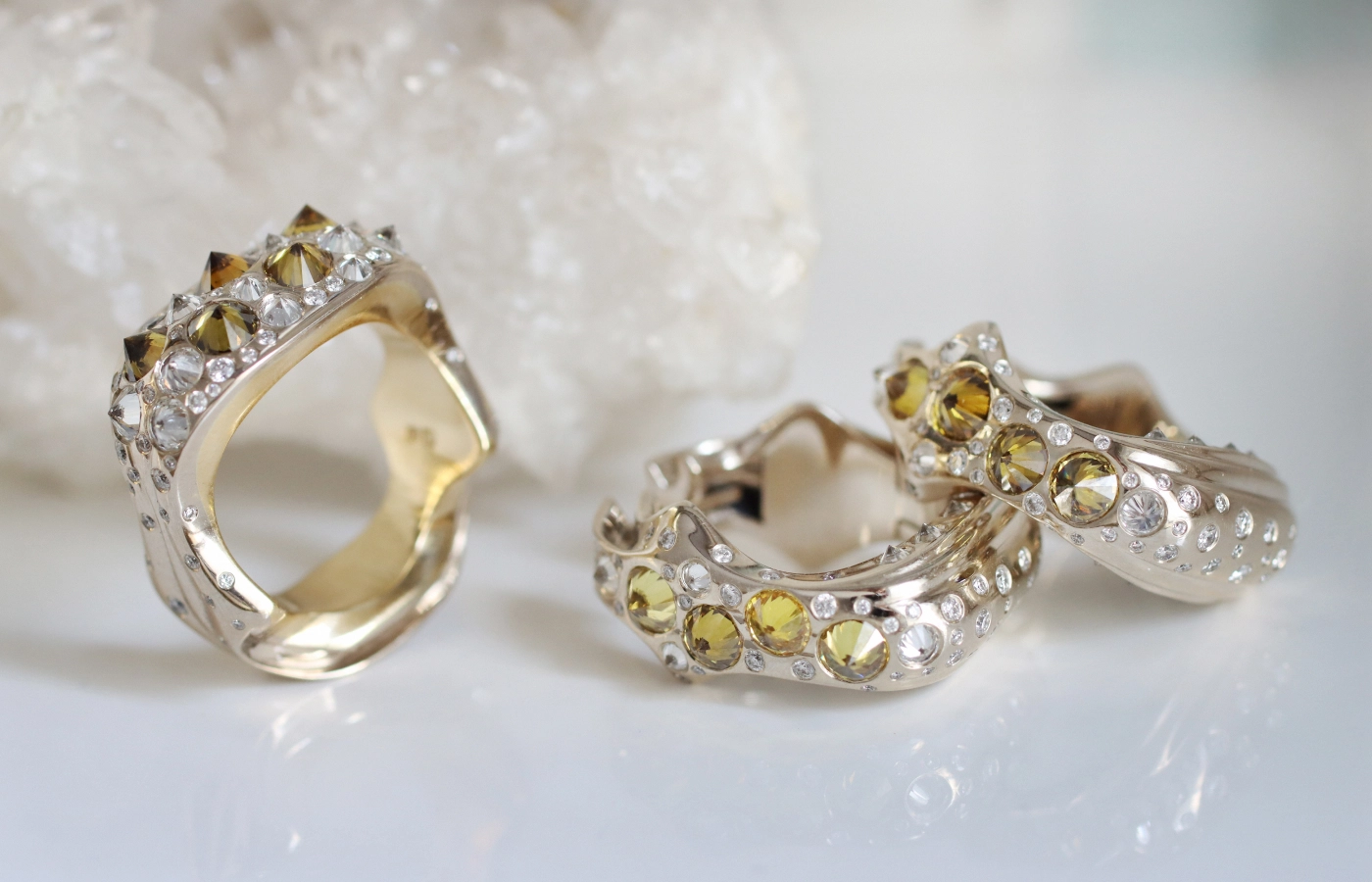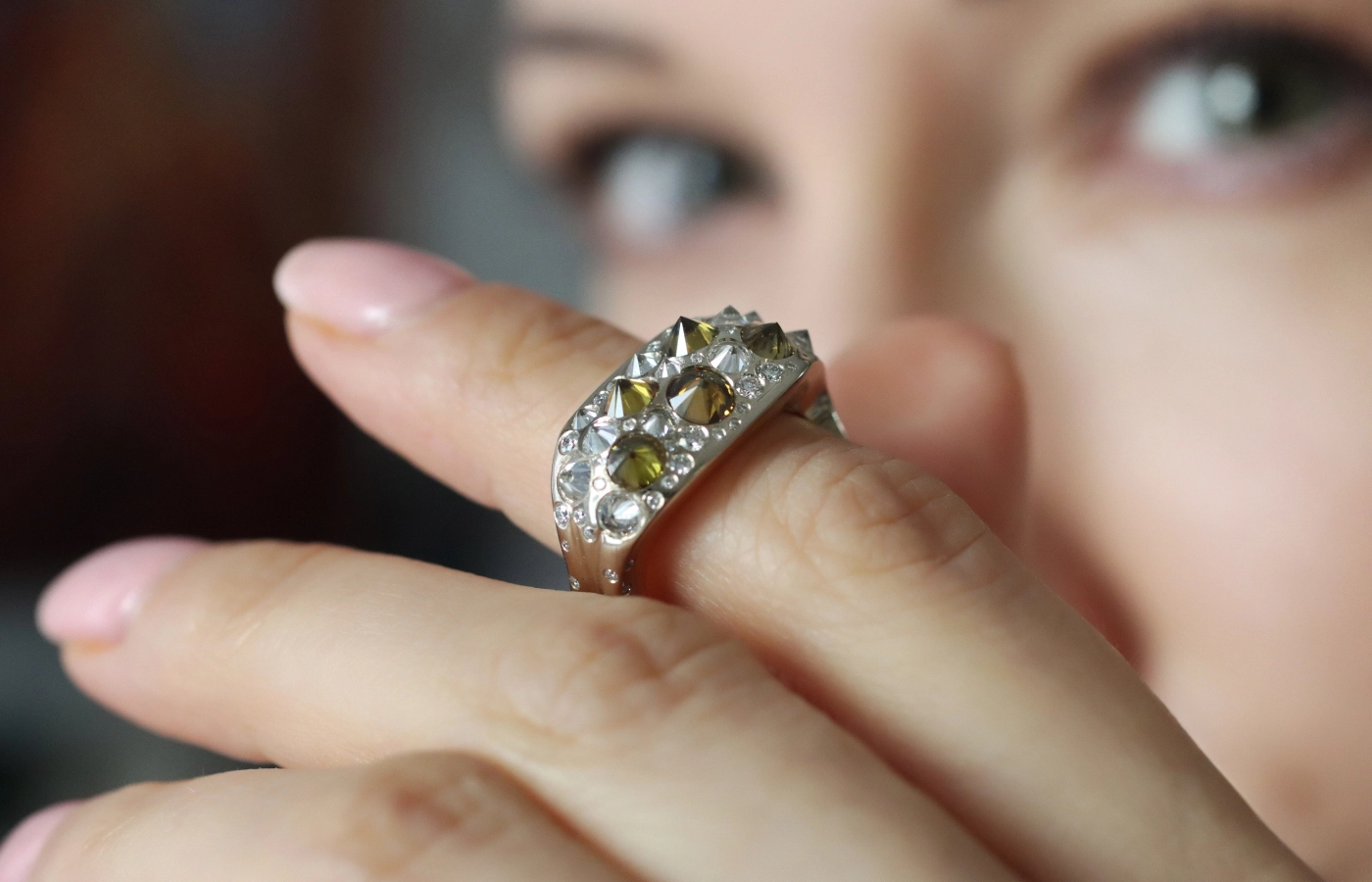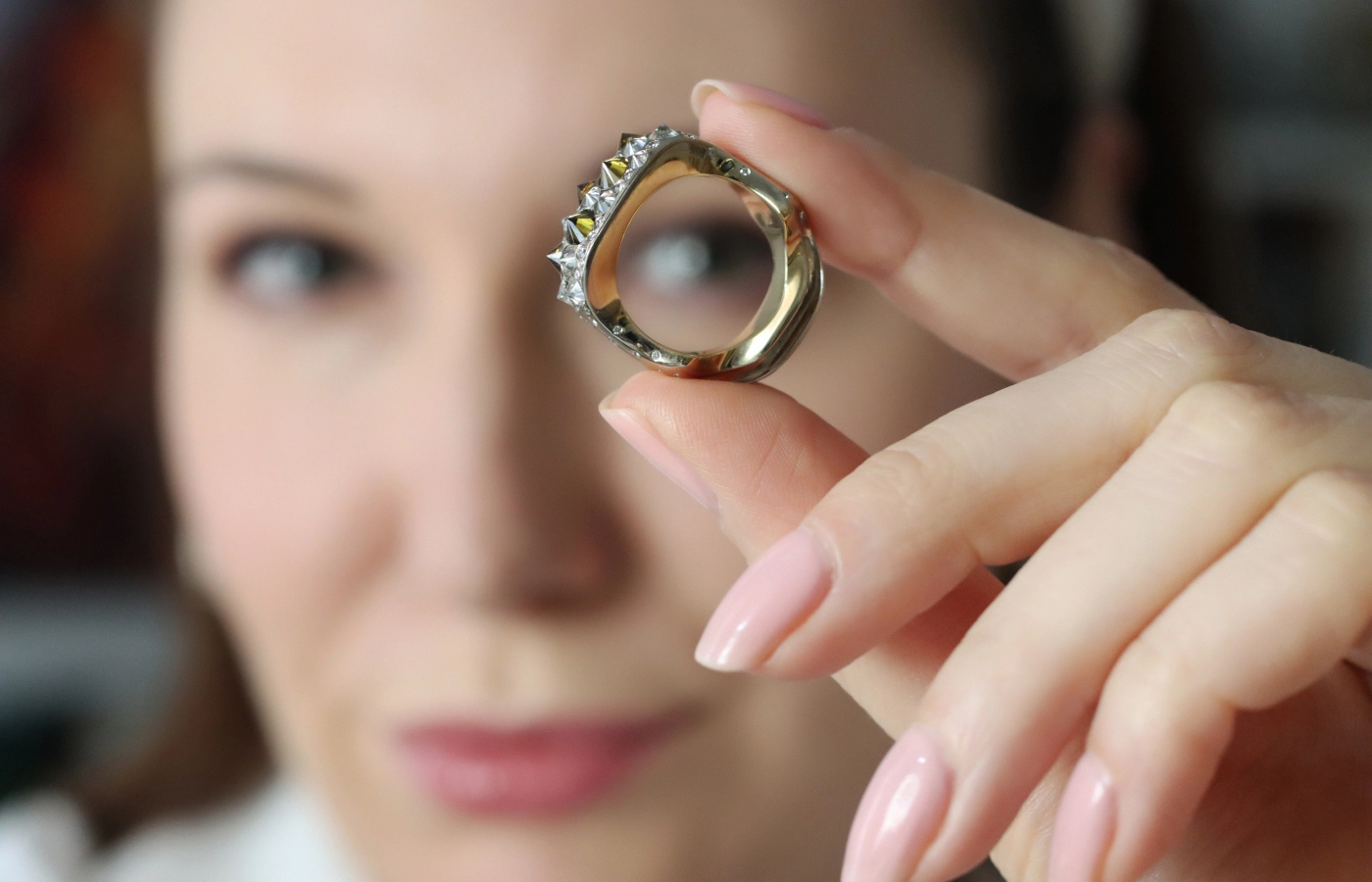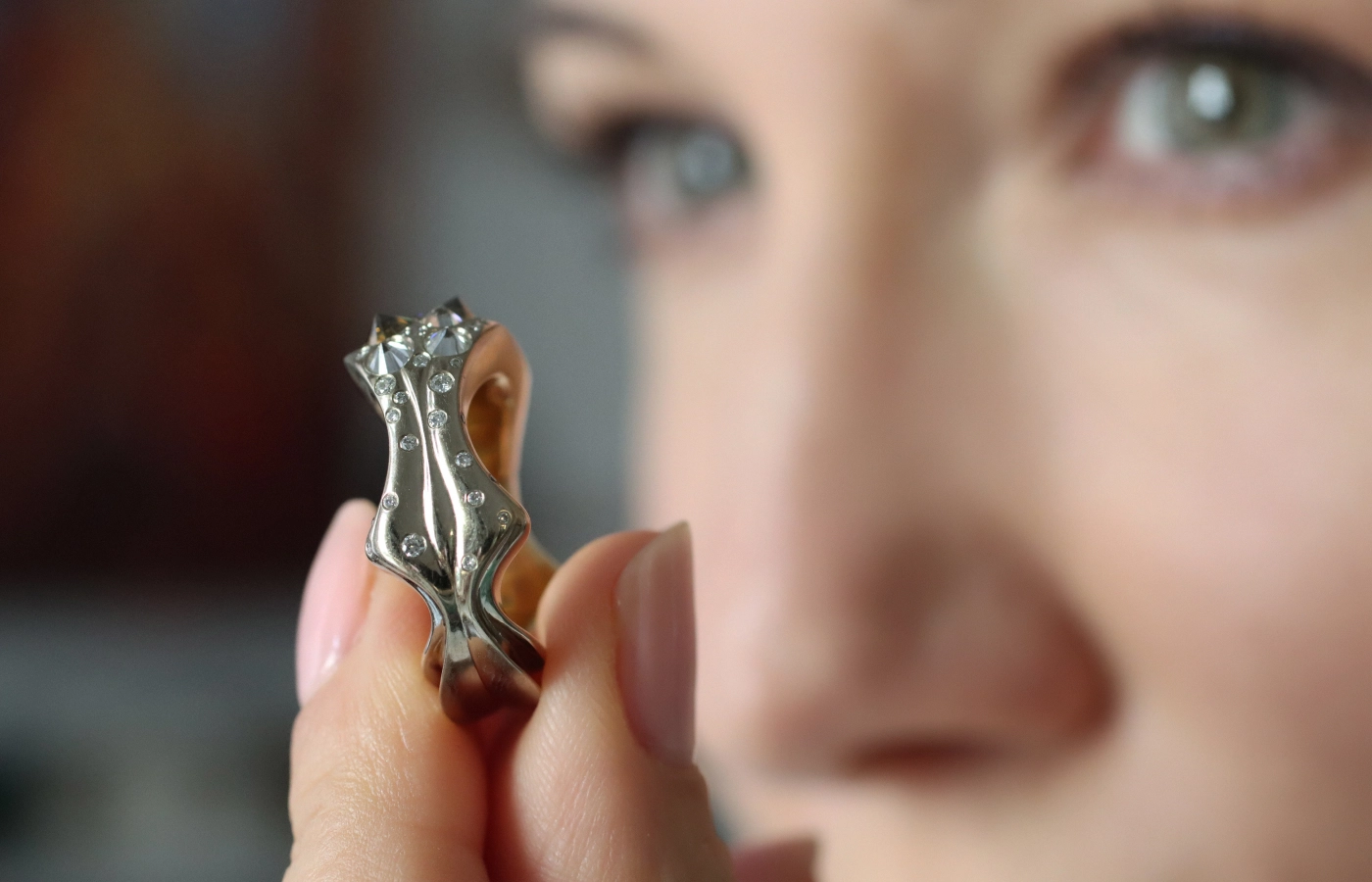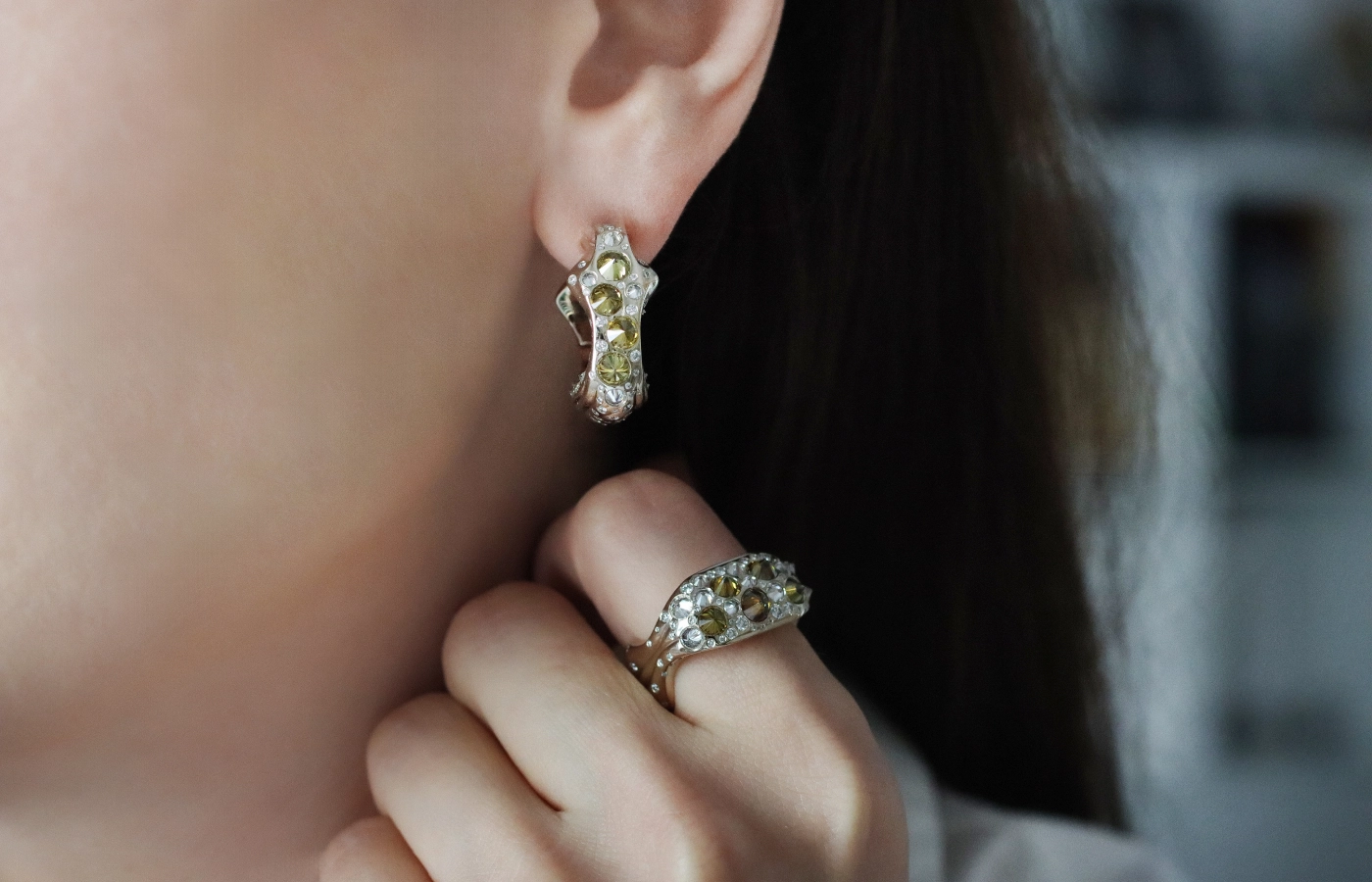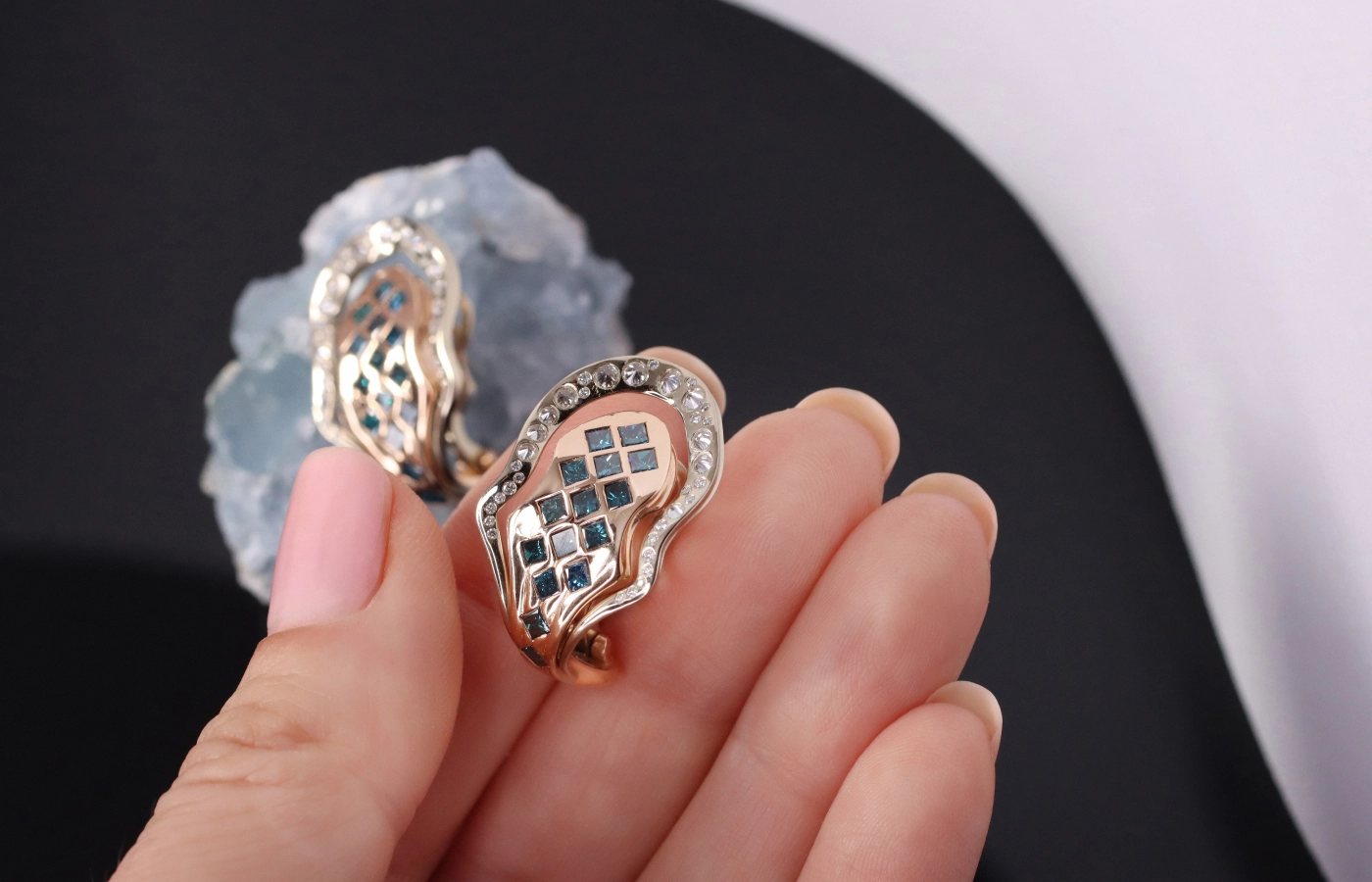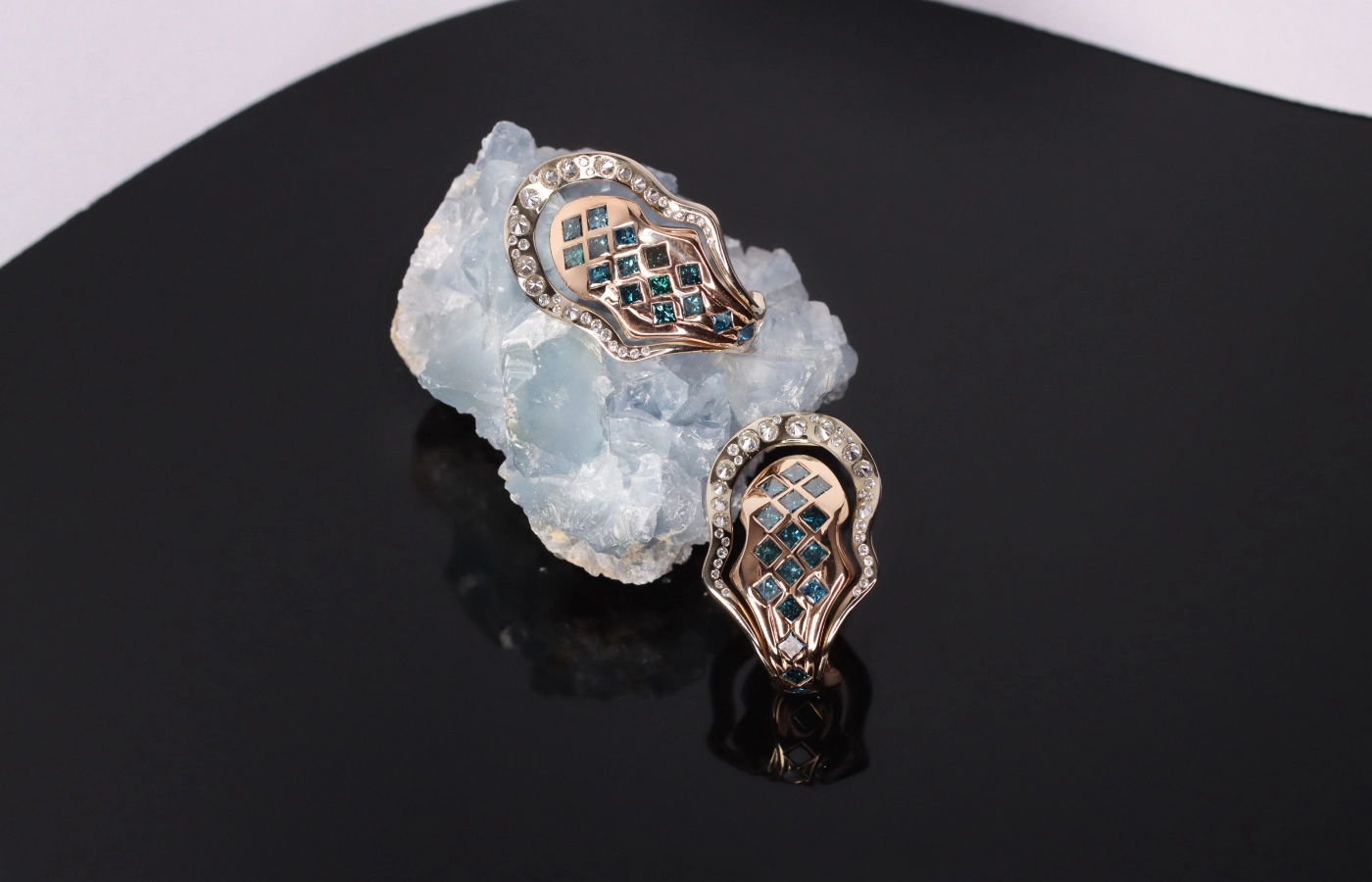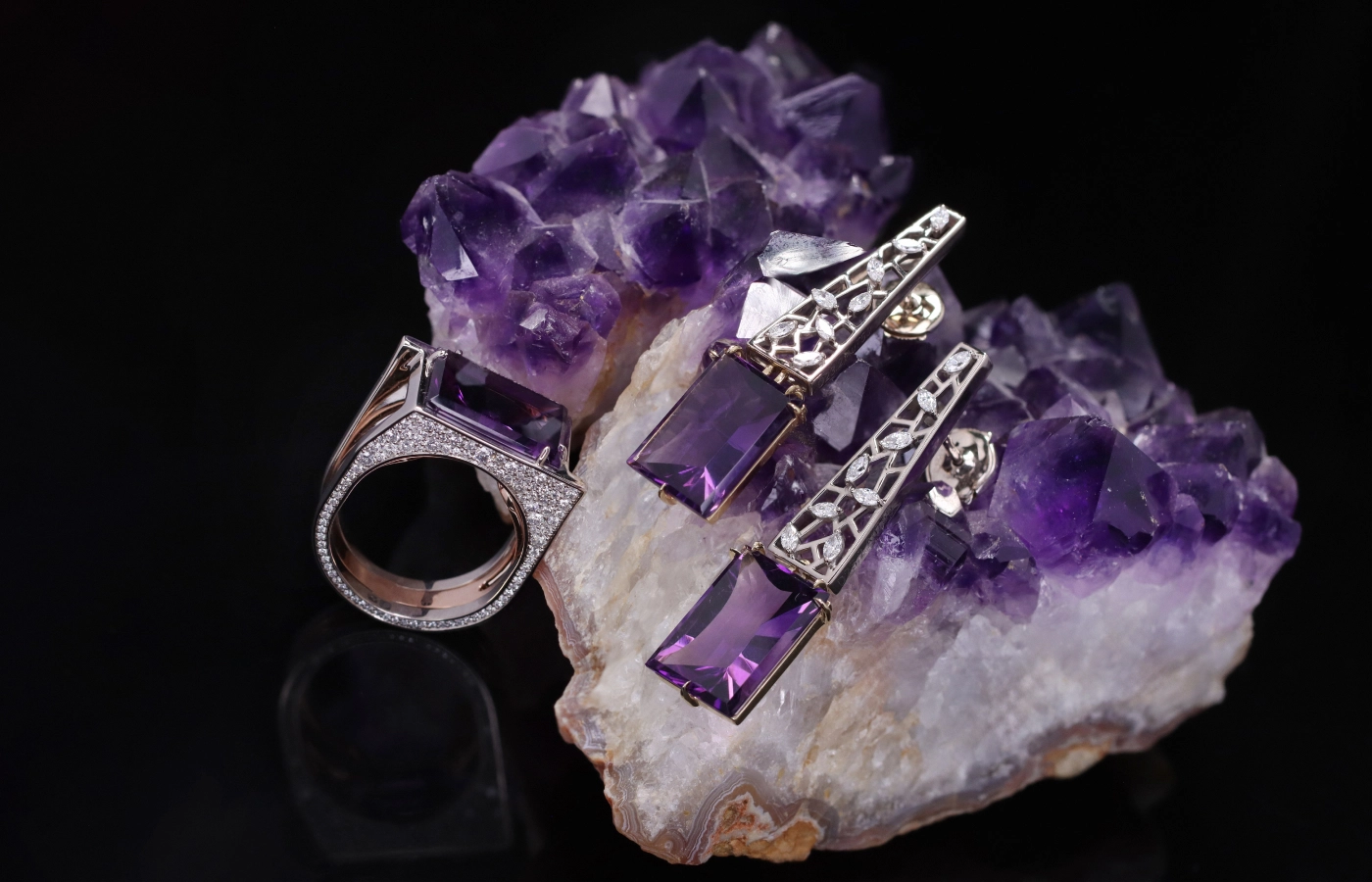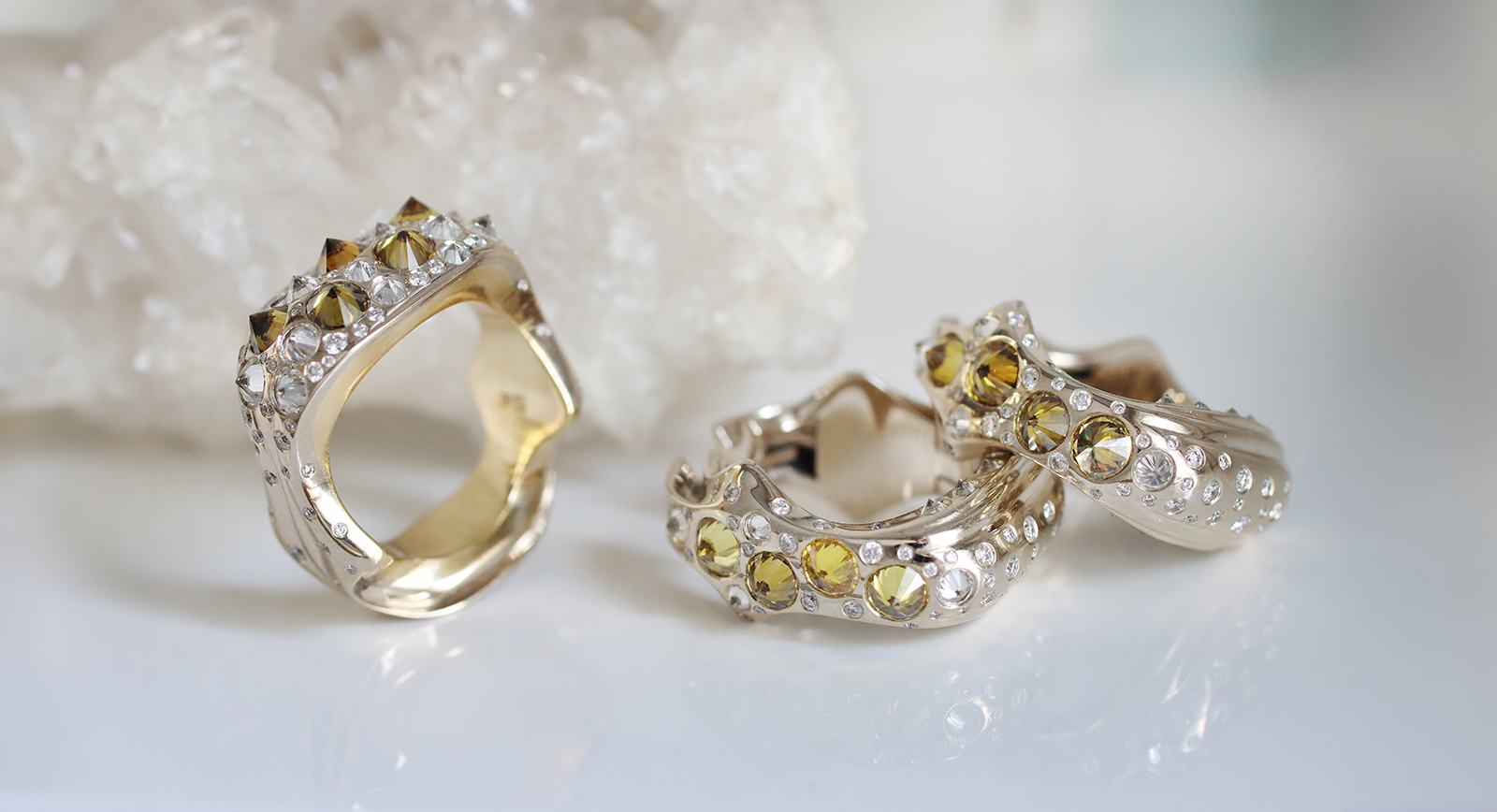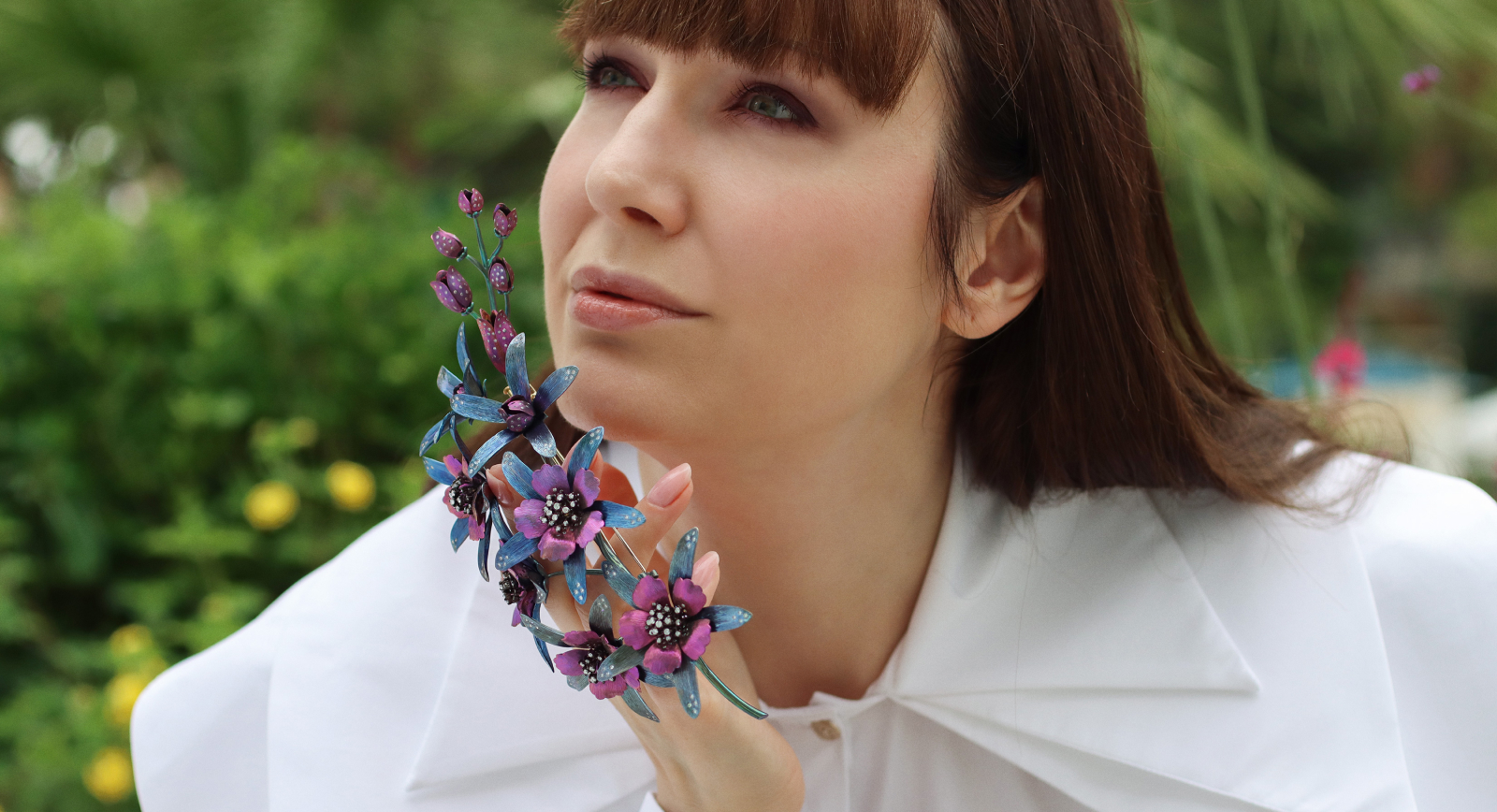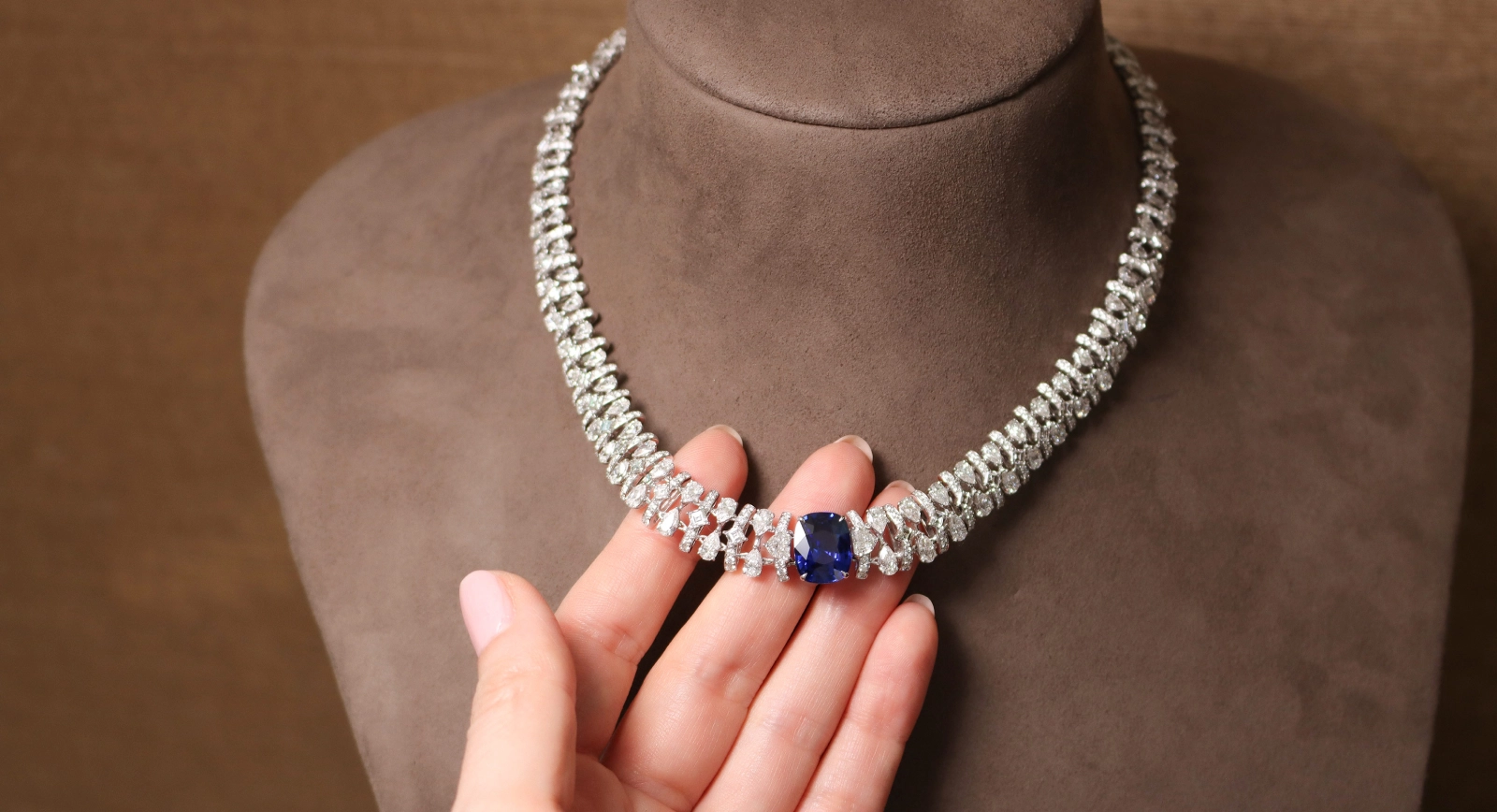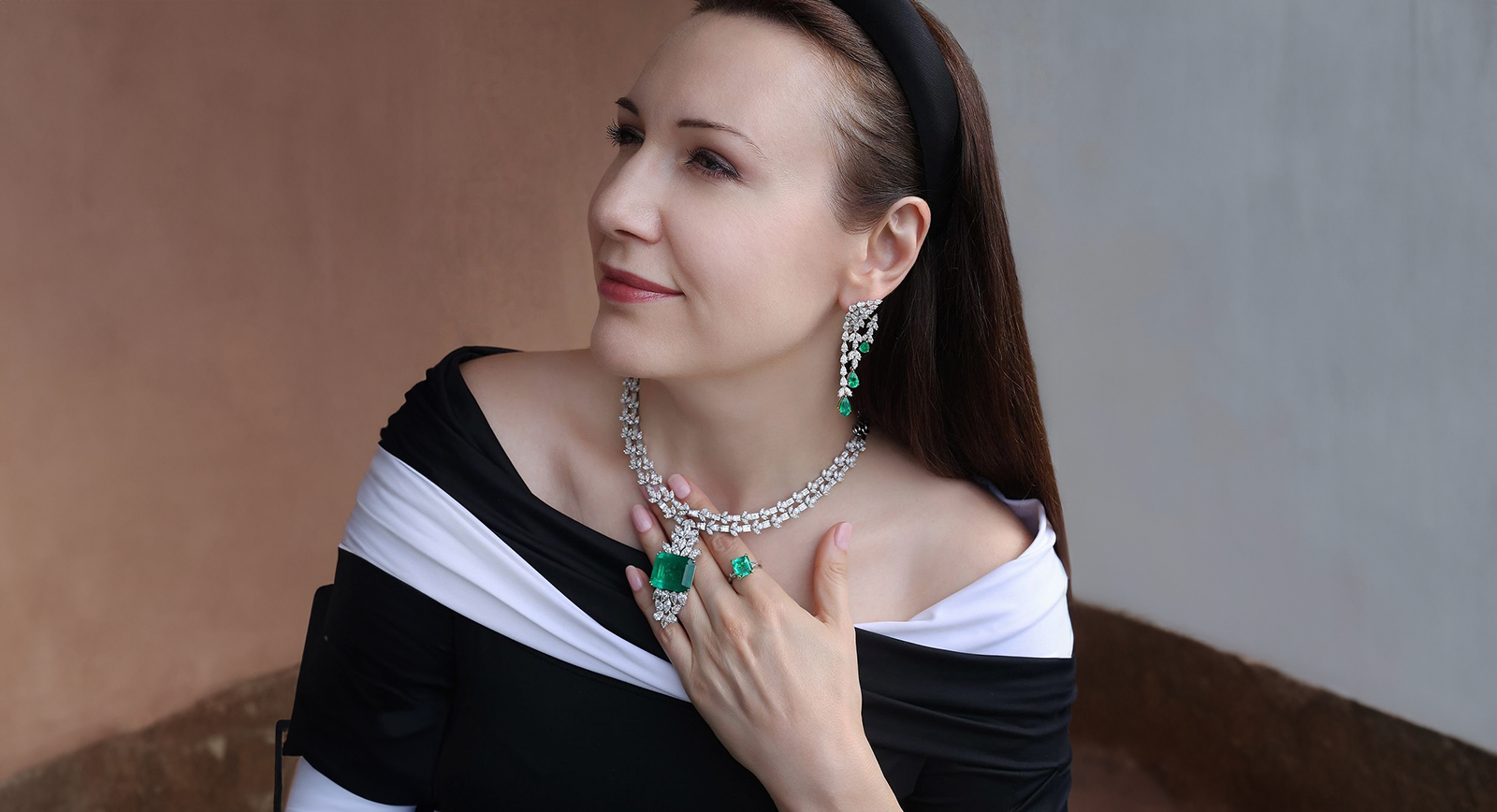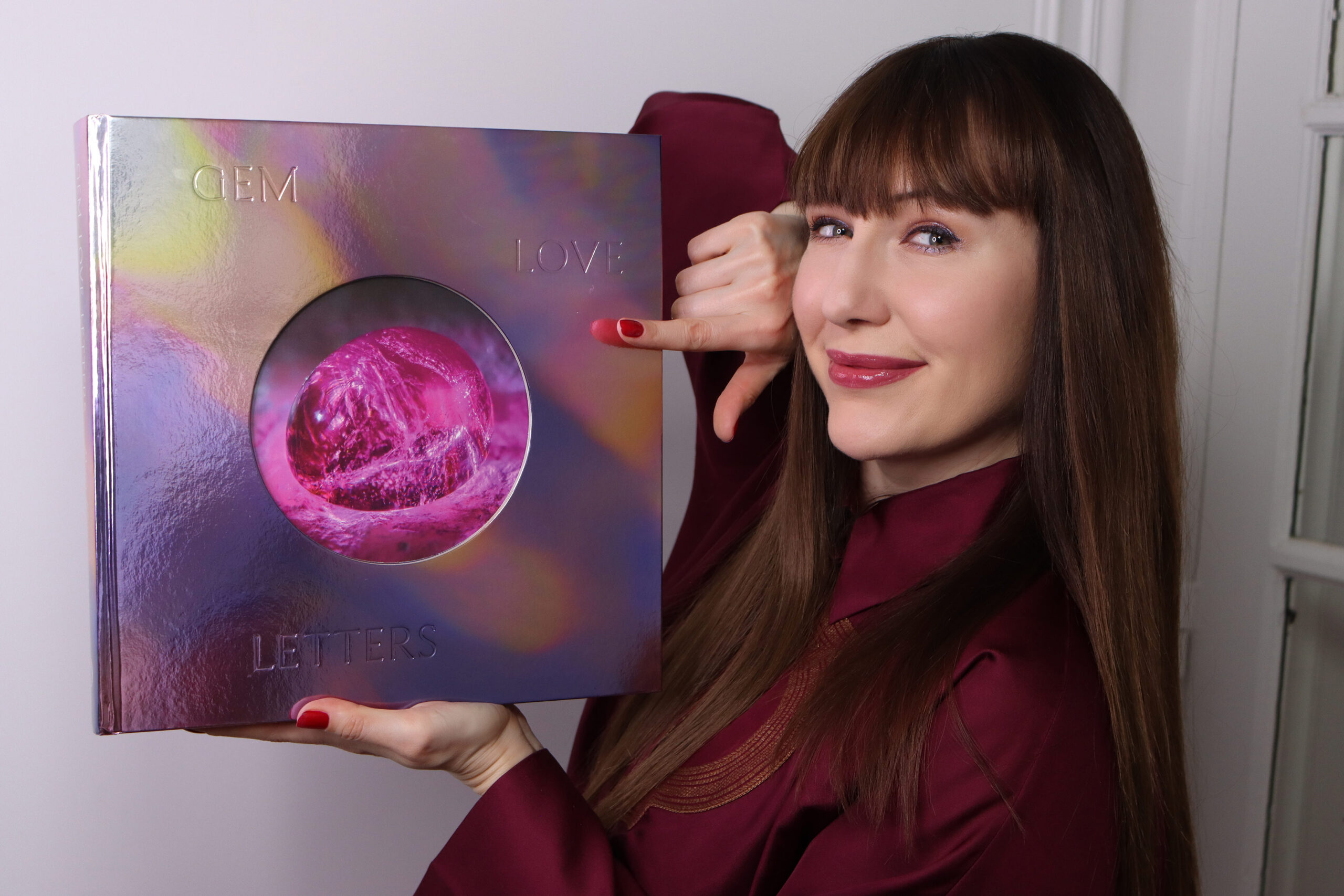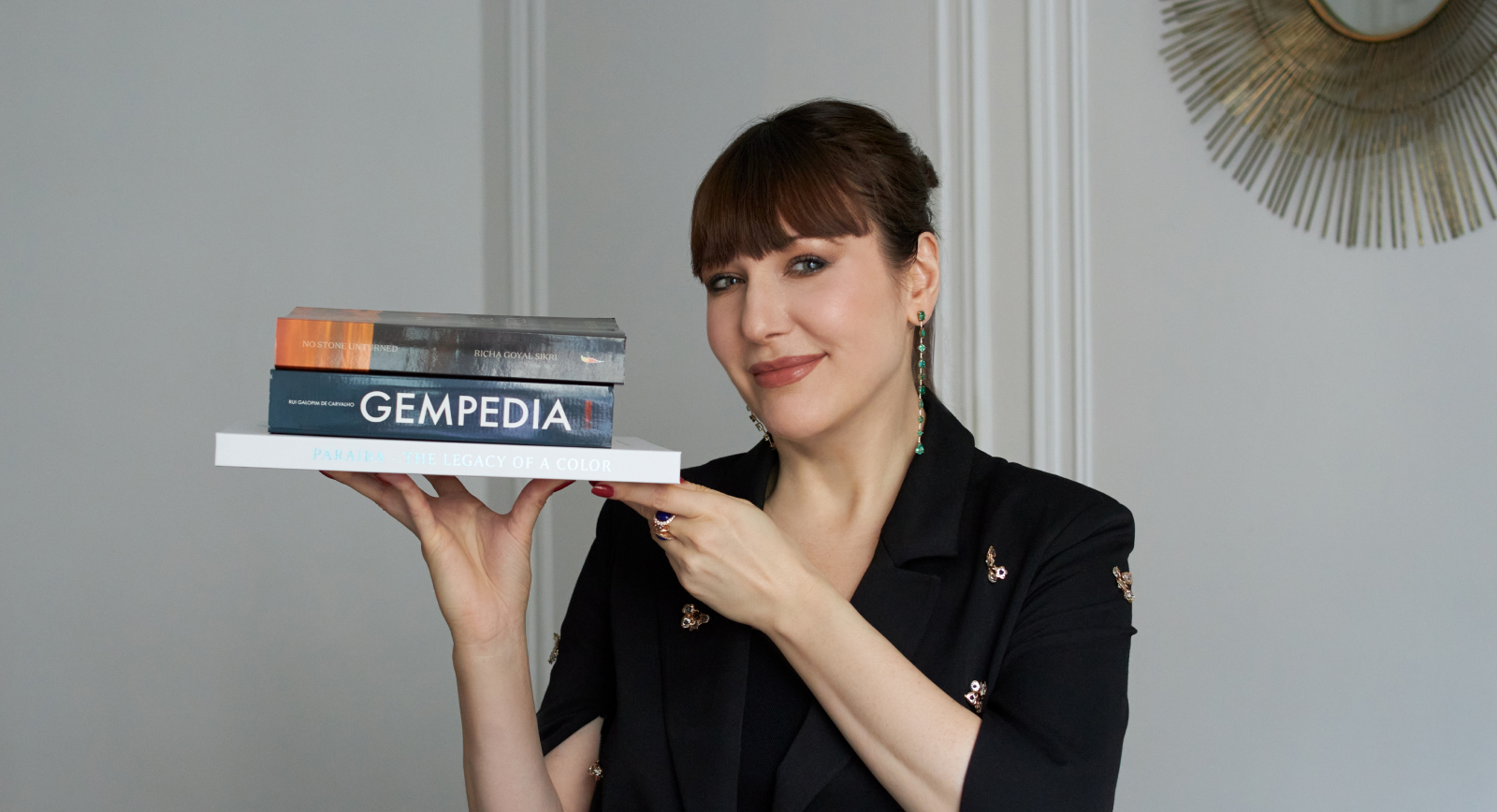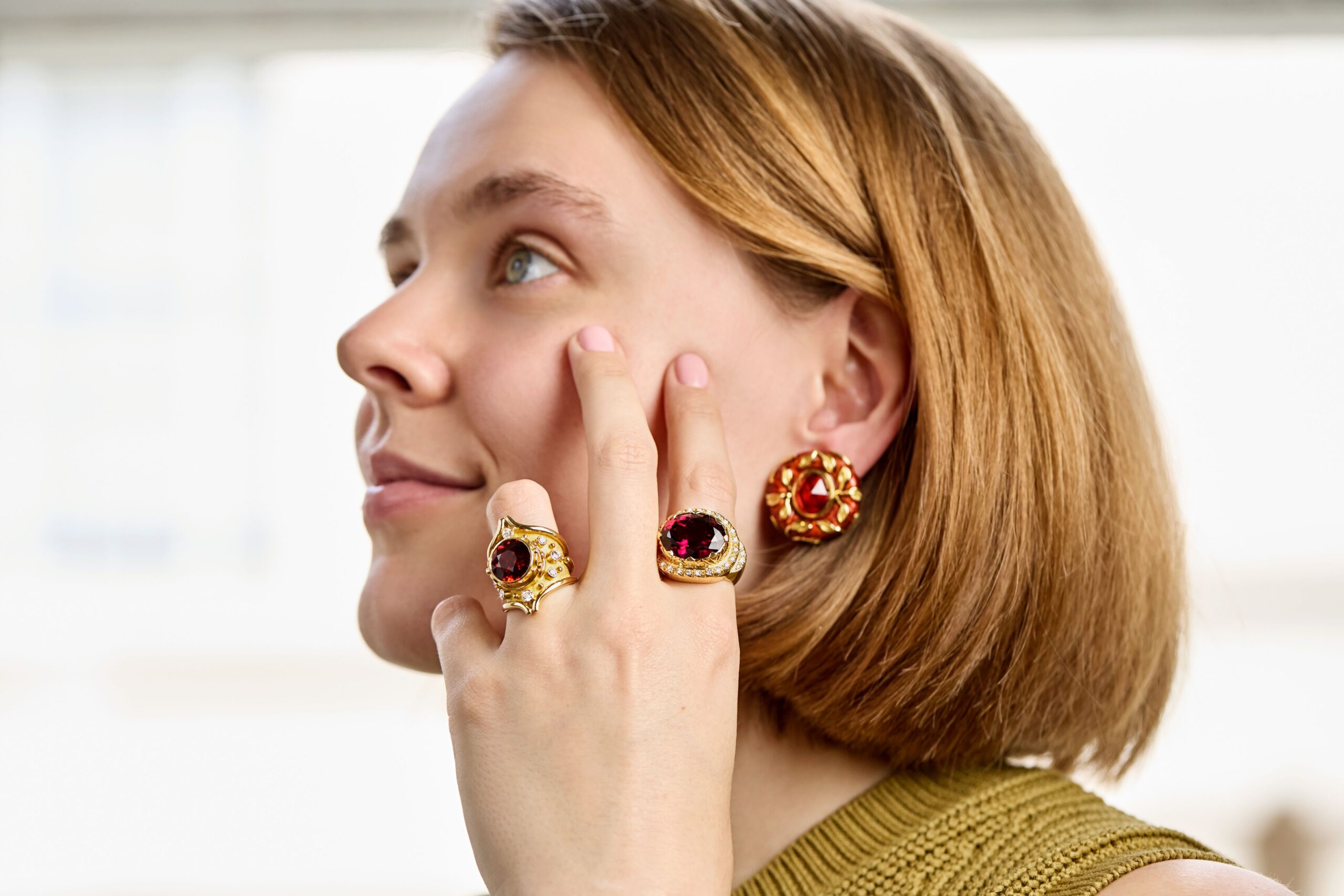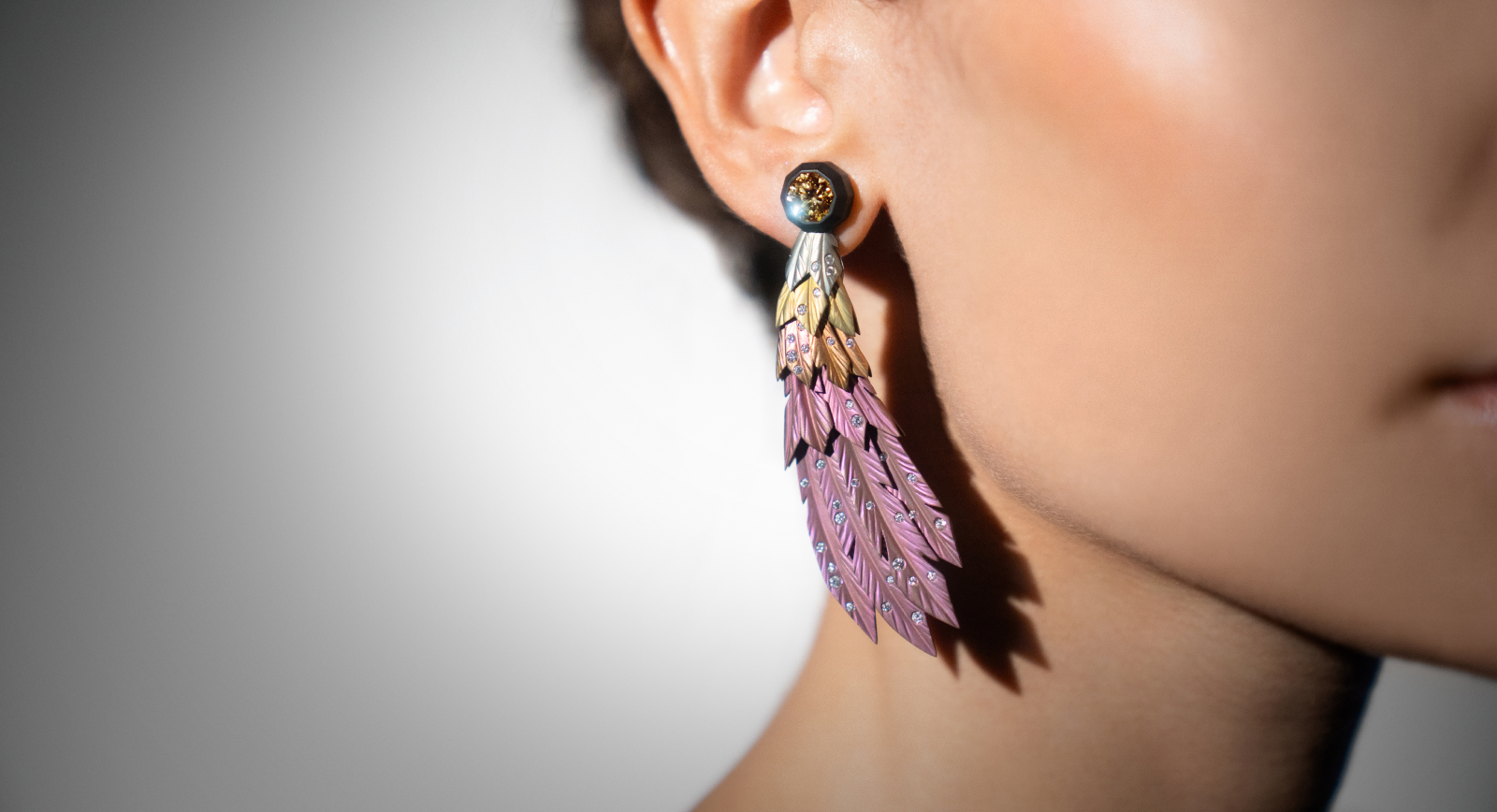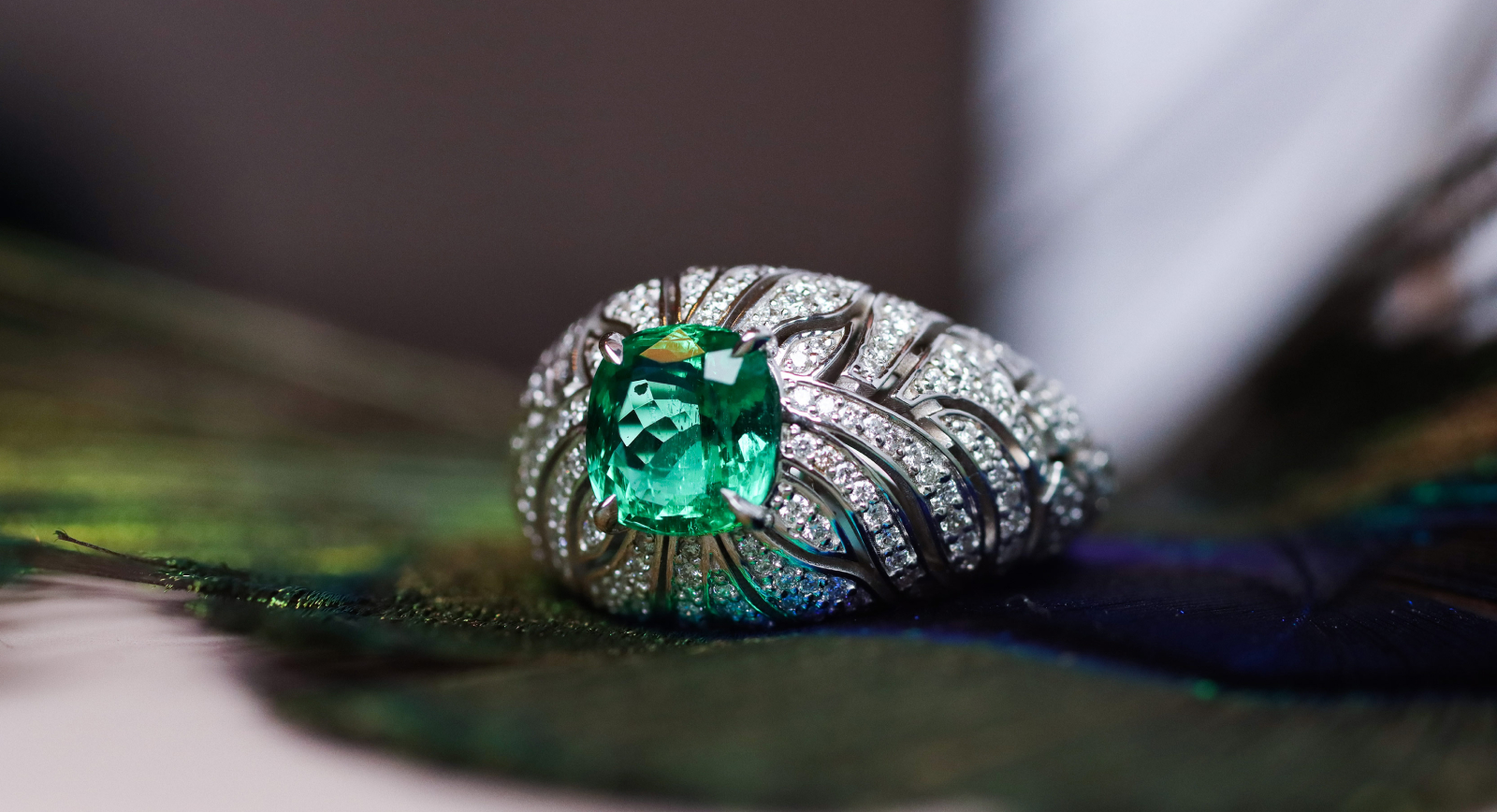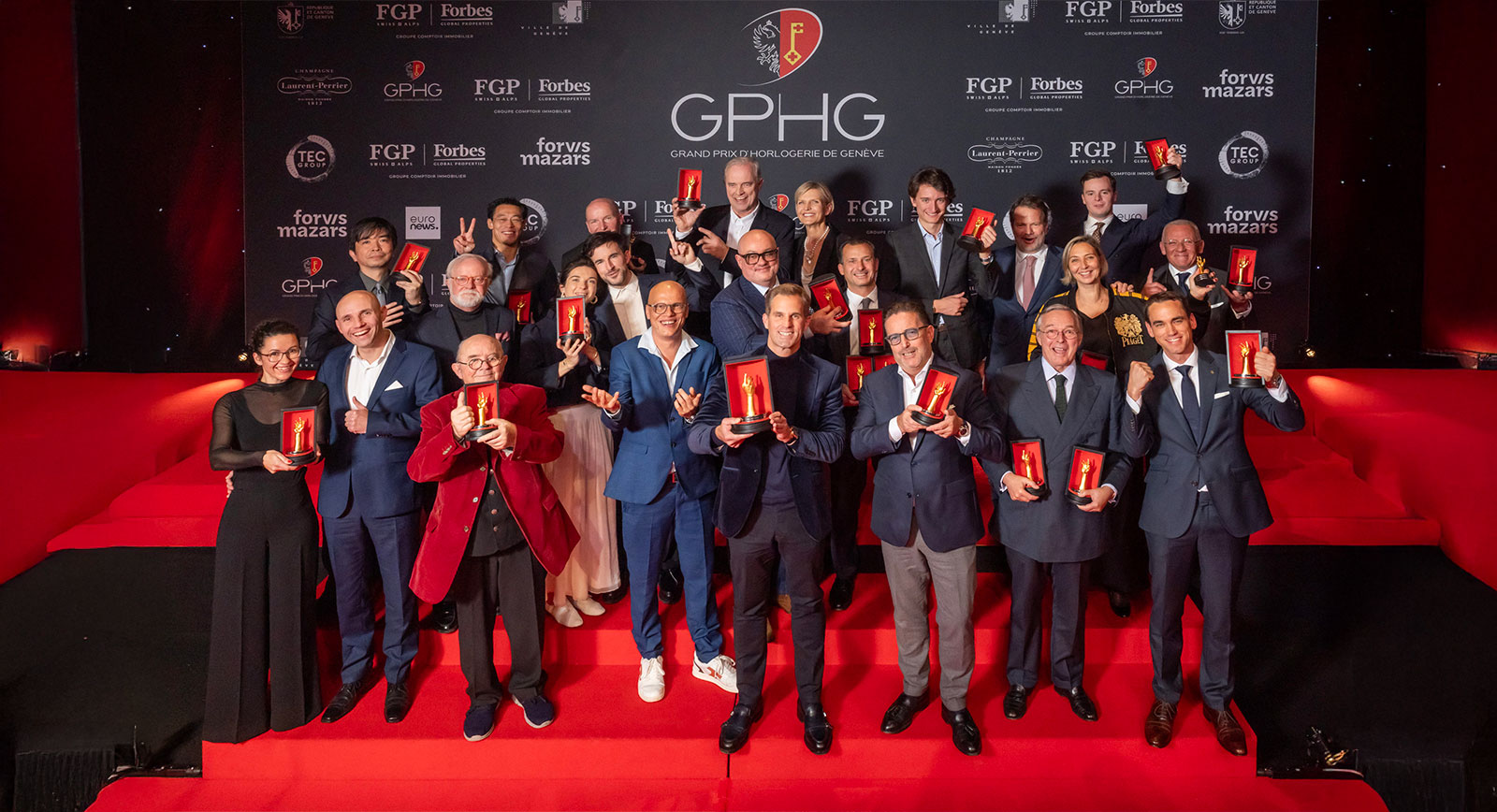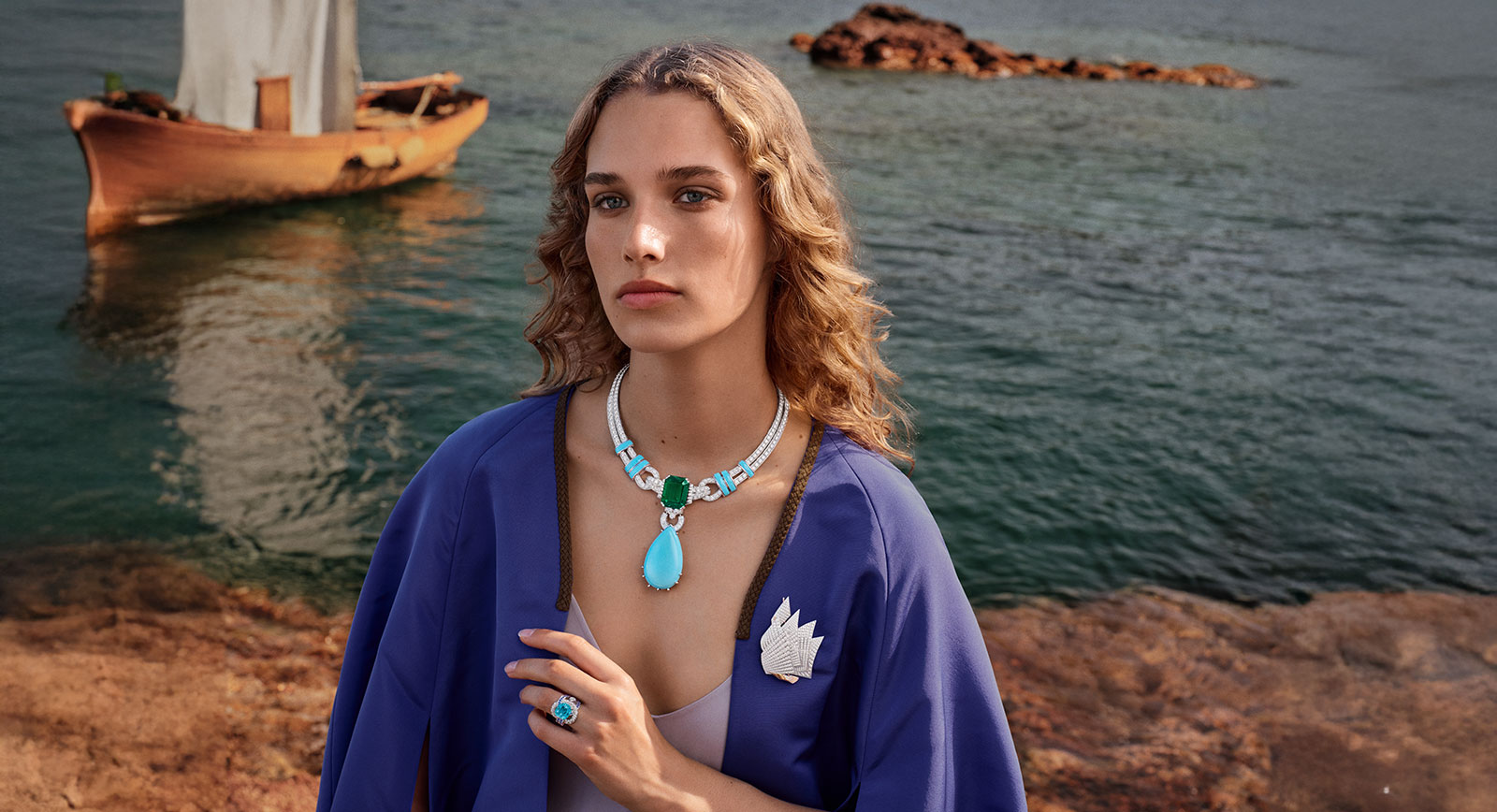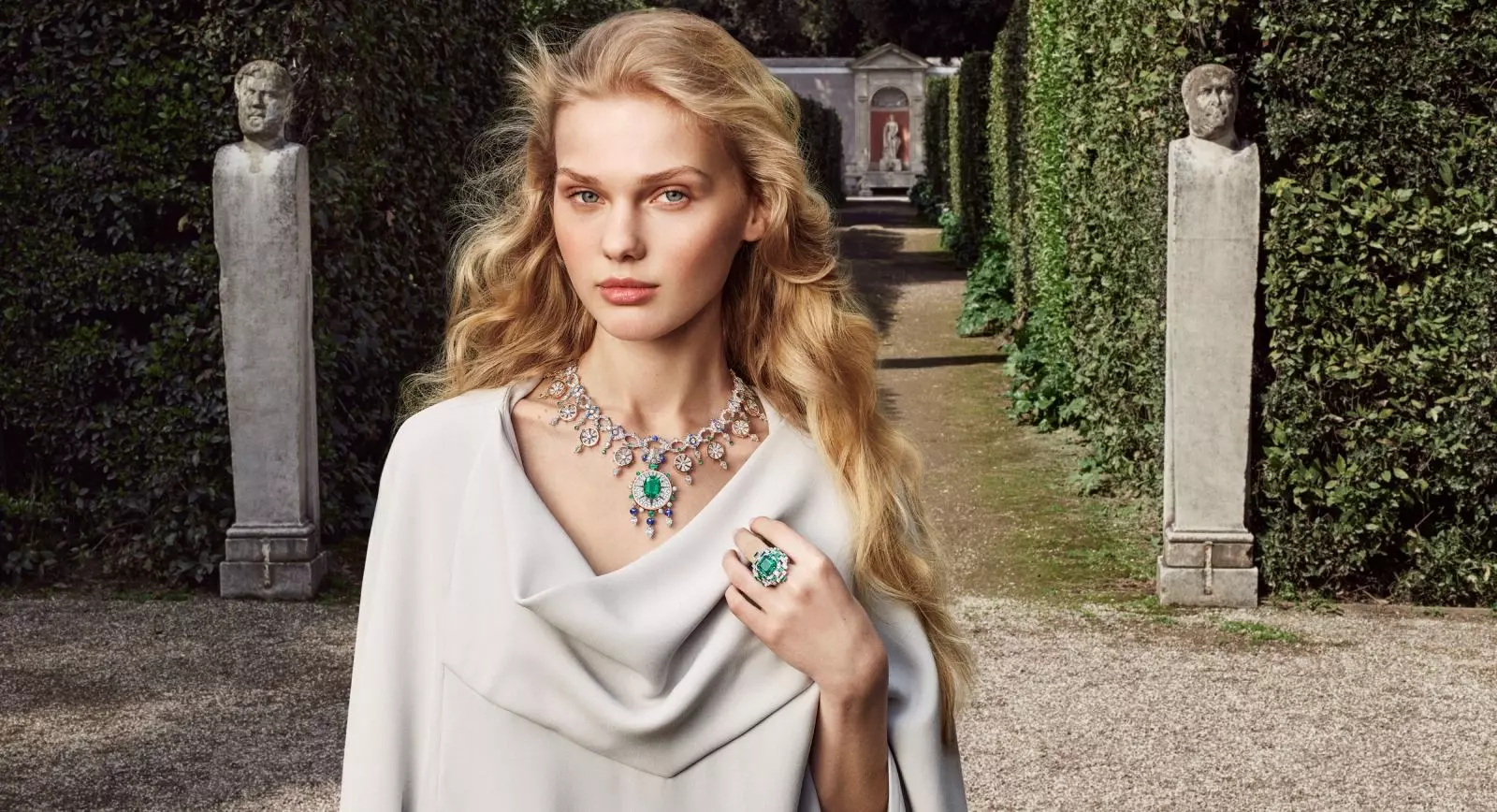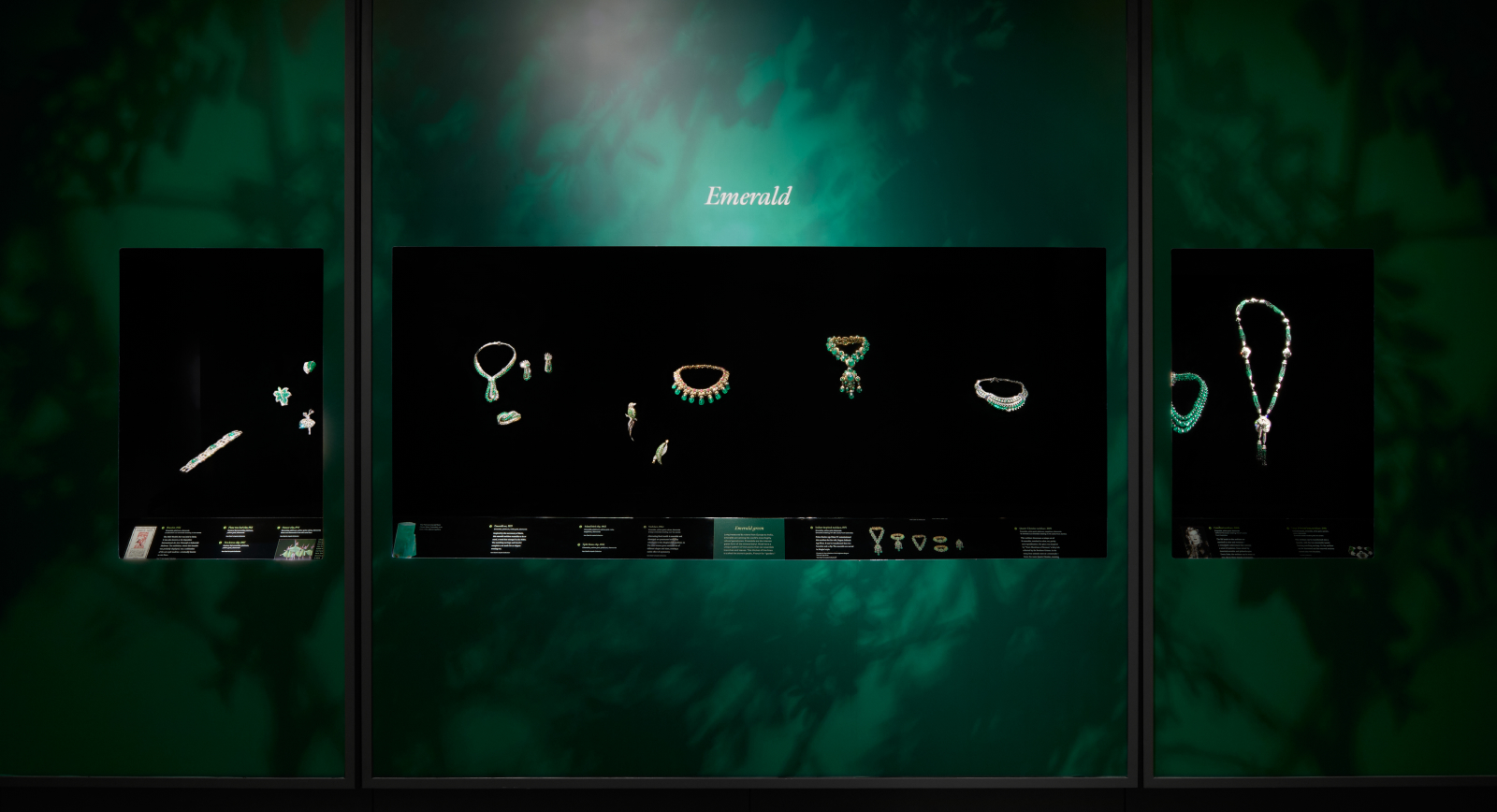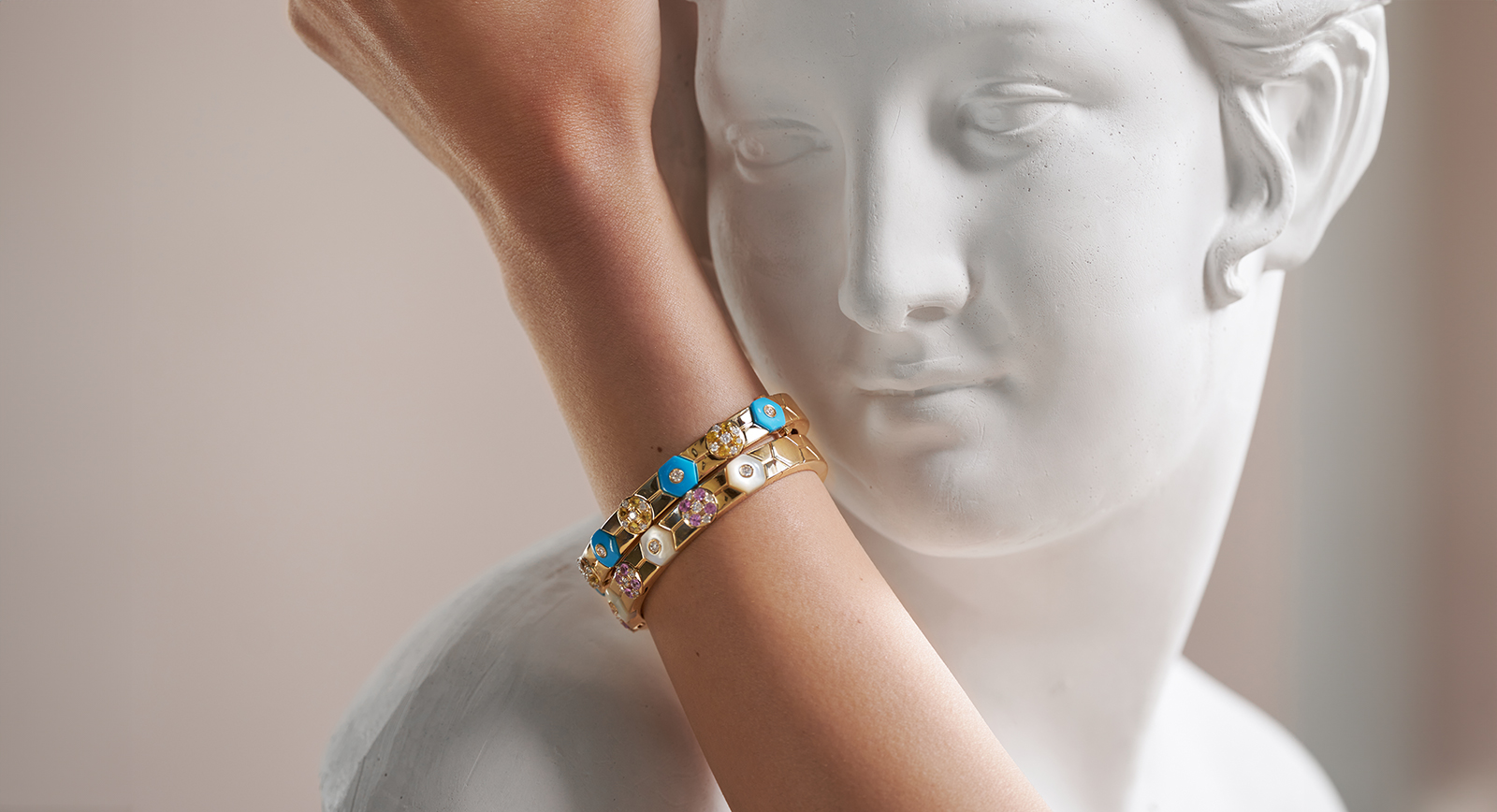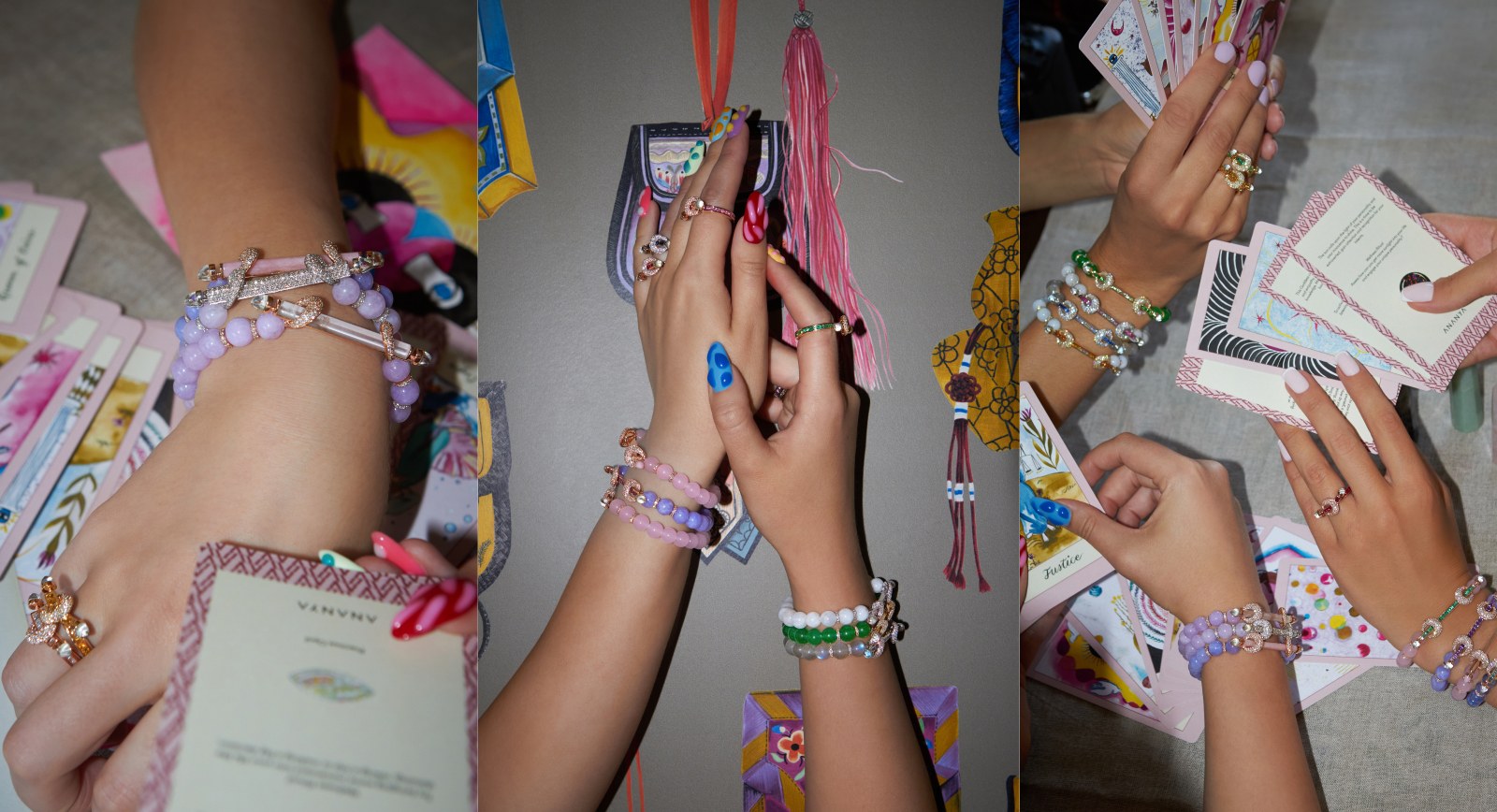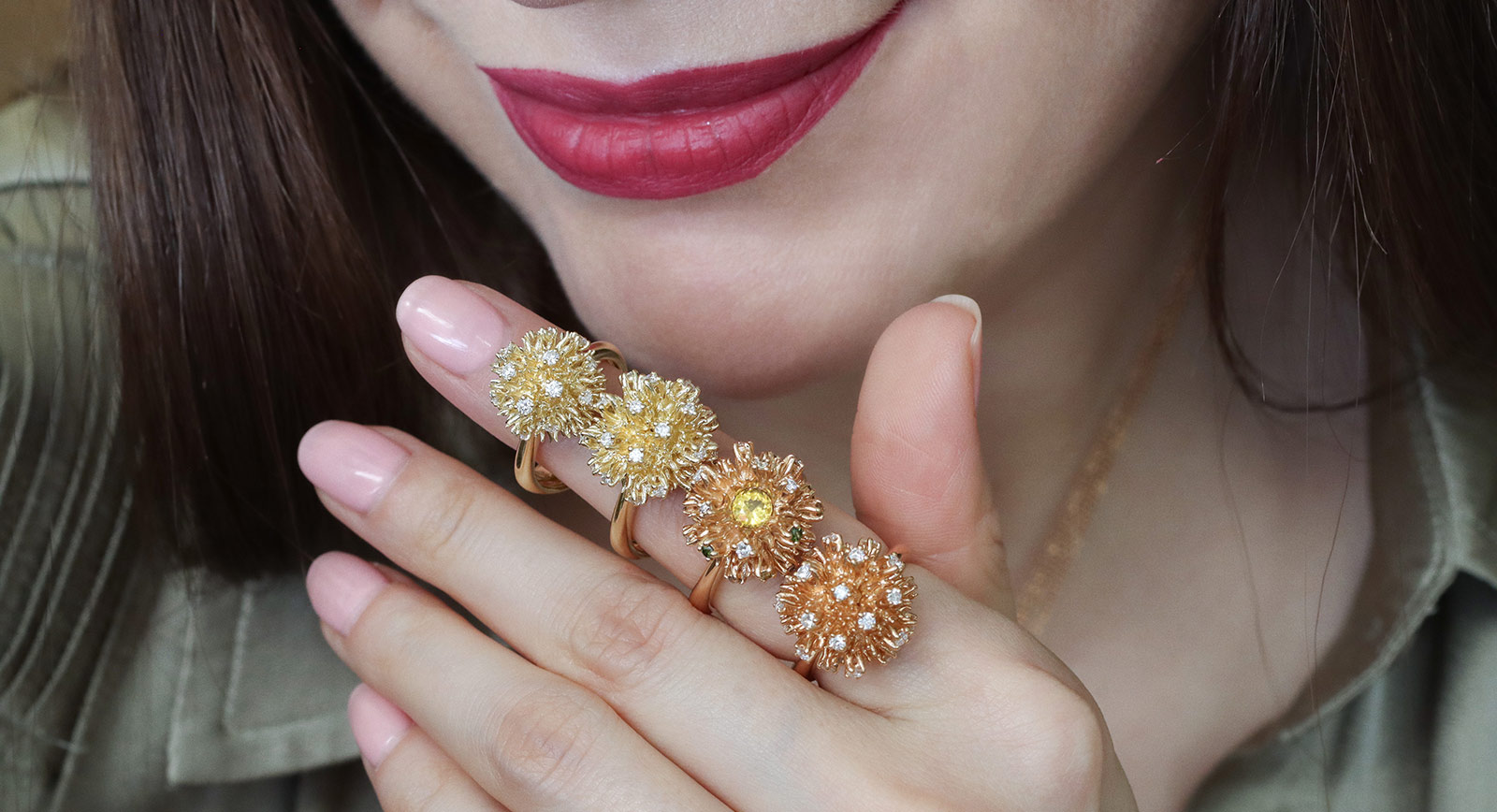
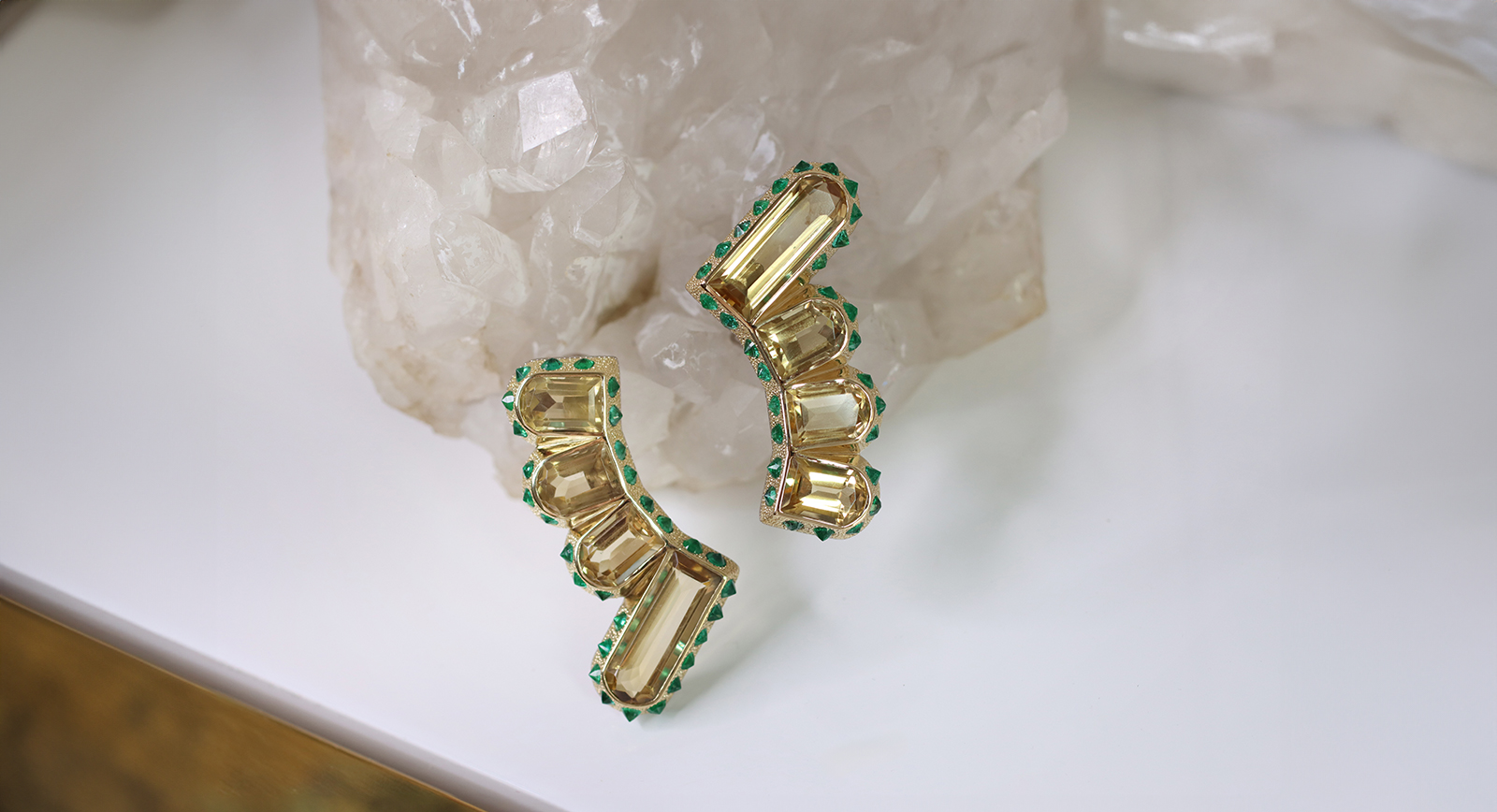
Enigmatic Artefacts: The Otherworldly High Jewels of Hugo Cahill
I often find that people who produce distinctive high jewels have a very artistic way of seeing the world. Whereas some would look at the shapes of daily life as mere building blocks, truly inventive designers see emotions, silhouettes, sculptures, colours, ideas and inspirations. The talent comes in channelling all these stimuli into a jewellery collection with a unique point of view and aesthetic value. Someone who fits this mould perfectly is Hugo Cahill, a designer who has recently transitioned from fine to high art under his own eponymous brand. I met Hugo in Paris, between his homes in London and Lisbon, to immerse myself in his signature sculptural style and discover more about the identity he is forging as an artisan of artefacts…
Like so many before him, Hugo Cahill’s journey to becoming a high jewellery designer was less of a straight line and more of a winding road. After years of working with prestigious European jewellery brands, Hugo travelled from his native Portugal to both London and Moscow to hone his craft and explore different sides of his creativity. He took photographs of his surroundings, musing on his travels, “moments alone and melancholy times,” he tells me, before focusing all this energy into developing his own fine jewellery. Jump forward a few years to 2020, and the jewellery brand was born with the support of Hugo’s husband, John Cahill, who was the co-founder of a prestigious London law firm and a senior partner for more than 20 years. Today, their partnership and combined talents have facilitated a shift from fine jewellery to high jewellery, infused with a British and slightly otherworldly flair! You will see what I mean throughout this article.
The idea to create fewer and more intricate high jewels evolved with time and only really started to flourish in 2023. When I visited Hugo and John in the late summer of 2024, they were just one piece away from achieving their vision of a 15-piece Renaissance High Jewellery collection. The results so far are avant-garde, unusual, and set with large coloured gemstones in nuanced shades… something that Hugo would never have considered before. He tells me: “For many years, I didn’t even admit that I liked gemstones. I had an education in the arts, and I thought that they weren’t for me but for people who were bling! I created jewellery that was artistic without gems, but deep down, I have always liked them. Now, I cannot imagine my jewellery without precious stones.”
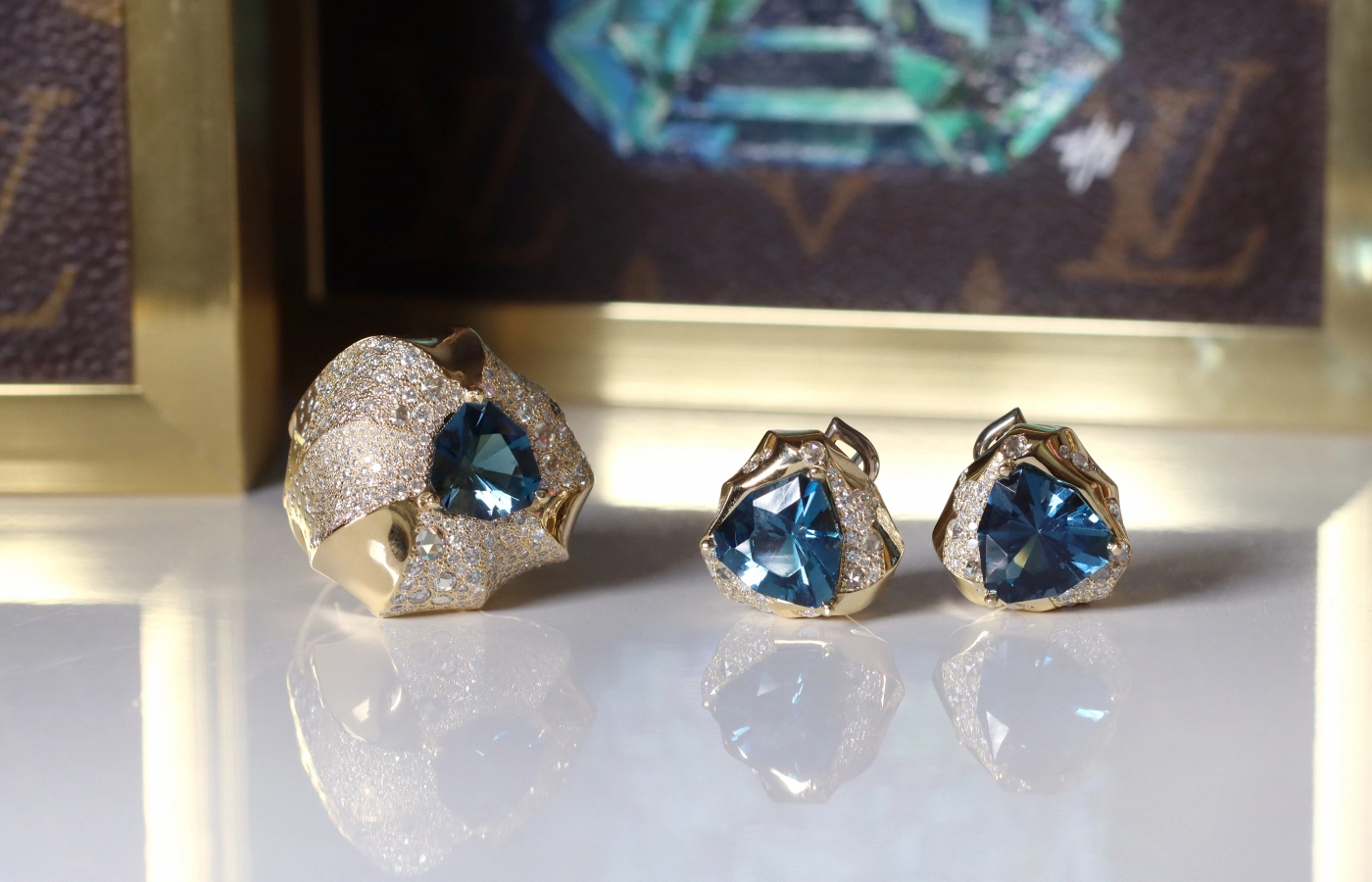
Hugo Cahill Phokialí ring (left) with topaz and snow-set brilliant- and rose-cut diamonds in 18k yellow gold alongside the matching Phokialí earrings with topaz and diamonds in 18k palladium white gold and 18k gold, both from the Renaissance High Jewellery collection
Today, Hugo works with artistic gem cutters and travels globally to find minerals that speak to him on an artistic and intellectual rather than commercial level. A great example of this is the Ophiuchi ring with a 5.08-carat tanzanite in an unusual shade of purplish grey, surrounded by diamonds, and set in both 18k white gold and an alloy of 18k white gold and palladium for a subtle grey light. I am also partial to the hues of topaz that Hugo uses, such as a deep navy blue in the Phokialí earrings and greyish blue in the Phokialí ring, and the way he celebrates inclusions, such as a ‘lily pad’ in a 3.05-carat Pakistani peridot in the Perseya Lumen ring.
Finding an affinity with coloured stones is only a small part of Hugo’s process, though. His website states that “the most profound part of his craft is the moment of conception – the fusion of imagination and artistry that sets his creative journey in motion”. I think we can definitely see this out-of-the-box thinking in the Renaissance collection, especially in the Hyperborea earrings with citrines and emeralds and the Equinox Auriga earrings with ultra-thin slices of baguette-cut emeralds set in waves of 18k gold. It is not easy to come up with entirely original forms for age-old jewels, yet I don’t think I have ever seen shapes quite like these.
Hugo has some personal favourites, too, notably the Maar Spiked ring and the Tephra Spiked earrings, both of which contain reverse-set diamonds. They are both mountainous and undulating, like the curves of an otherworldly landscape, which I associate strongly with the realm of science fiction. “There are lots of beautiful things that I love in traditional jewellery,” Hugo explains, “but something I enjoy creating is very stylised shapes.” He continues: “It is very, very hard to do, and it doesn’t come easily to me, but it is something that I am good at if I put in the hard work. That’s the direction I am going in. There are so many beautiful shapes and so many brands doing beautiful things already, so there’s no point in copying that. I have to find my own artefact.”
To achieve these sculptural, gem-encrusted shapes, Hugo works with computer-aided design technology, which allows him to create 3D models of jewels as they appear in his mind. During this digital process, he can push the boundaries of what is possible without losing sight of what his master craftsmen in Porto, Portugal, will need to make the creation a reality. “They often try to simplify designs,” Hugo tells me of the workshop he partners with, “but my work is all about complication, and, obviously, I must challenge them. Yet, when the pieces are ready, they really love them, and they enjoy the process.”
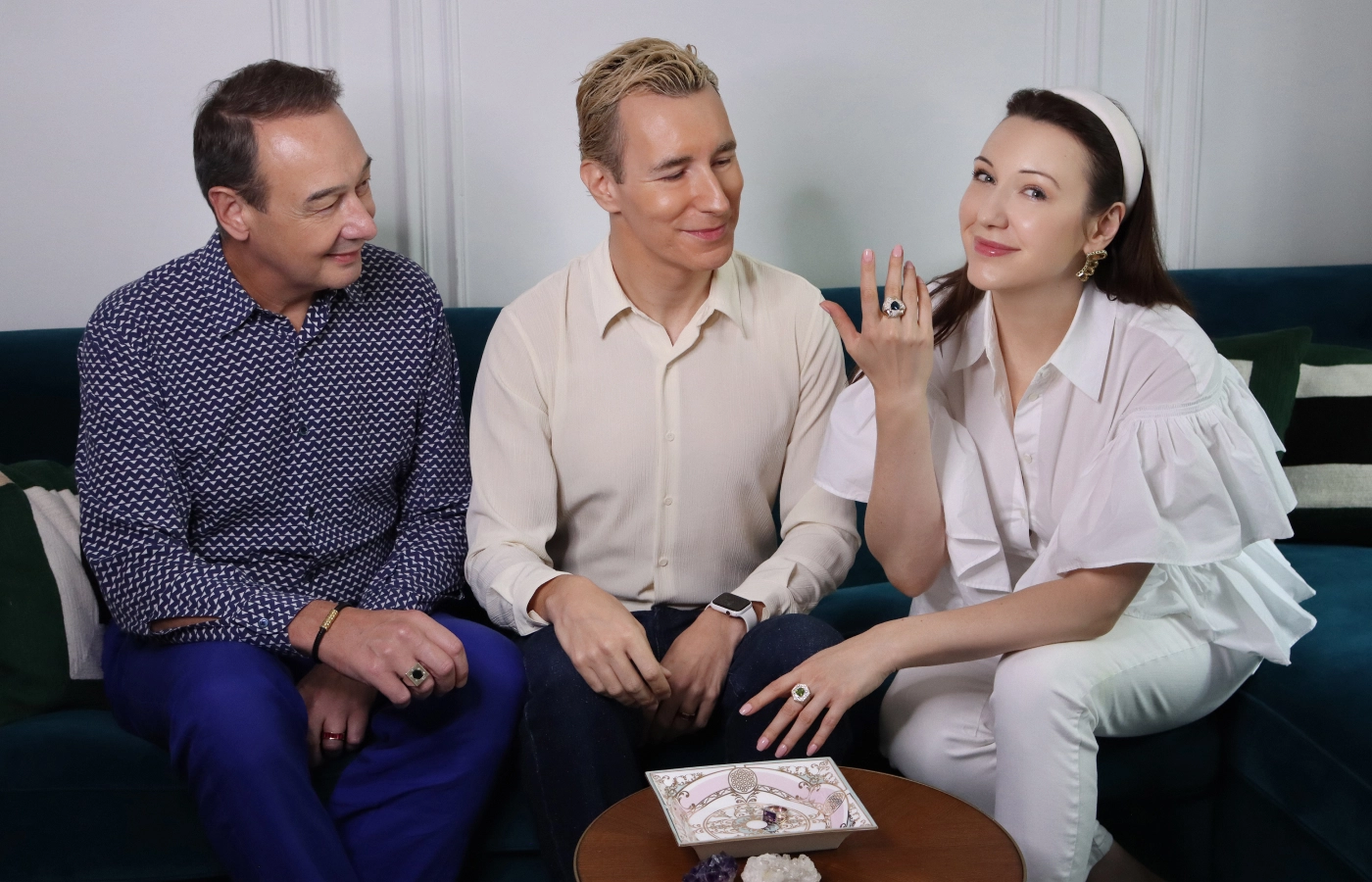
Katerina Perez with John (left) and Hugo Cahill
Part of this process is meticulous stone-setting, specifically the use of pavé and reverse-set diamonds and coloured gemstones. The latter is a signature of the Hugo Cahill aesthetic and something that adds to the slightly alien sheen that seems to bathe all the Renaissance High Jewellery creations. His other recognisable through-lines are voluminous designs and shapely forms, coupled with fancy-cut and shaped gemstones that are set in non-traditional gold alloys, such as beige gold and palladium mixes. Hugo says: “I love to observe things from a different perspective – from a non-commercial perspective – that’s what my clients look for.”
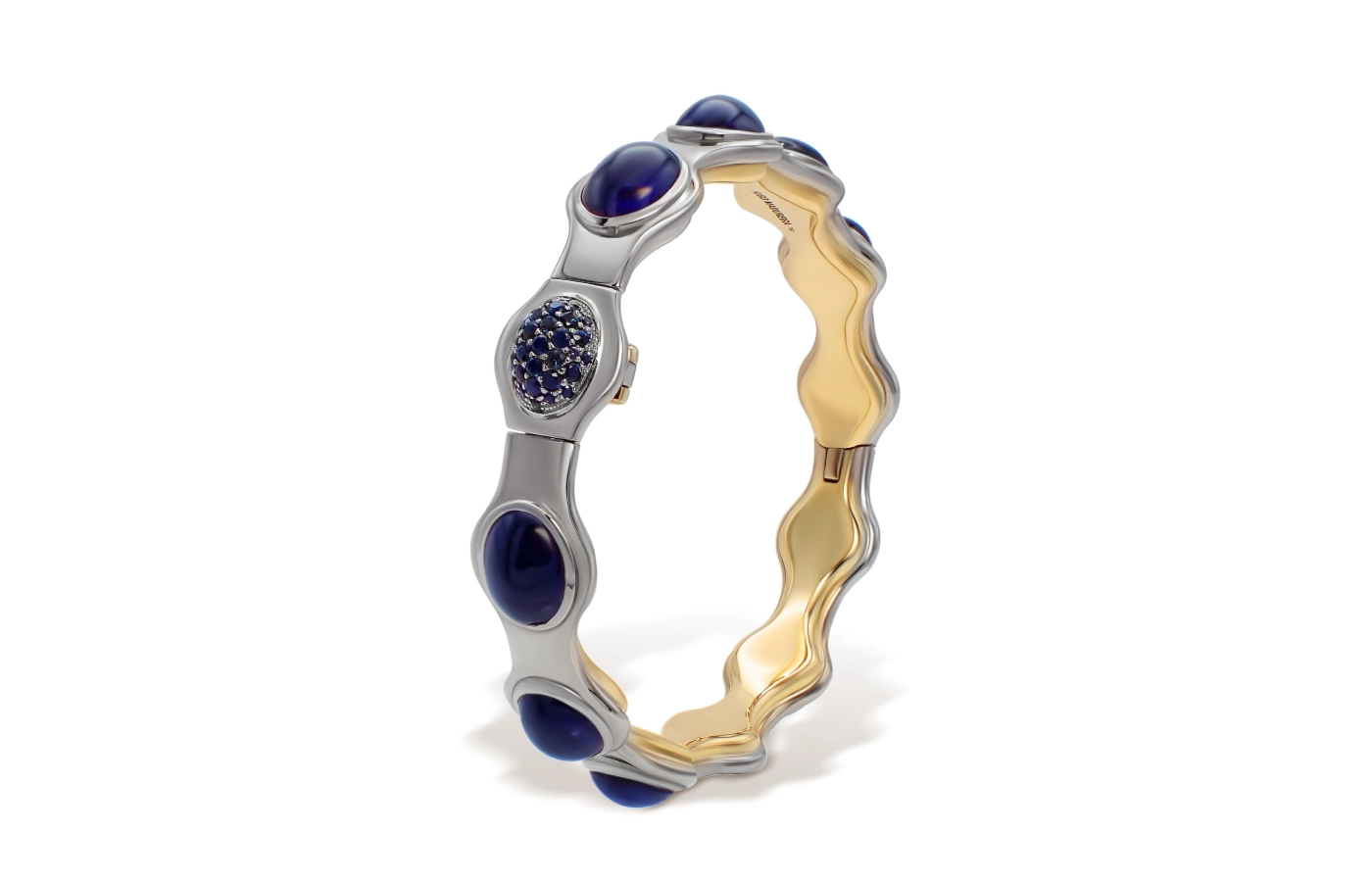
Hugo Cahill Pleiades Asterism bracelet from the Renaissance High Jewellery collection with cabochon sapphires and 33 brilliant-cut sapphires set in 18k palladium white gold and 18k gold
Another thing that struck me about the brand that Hugo is developing is its vintage feel. Now, I don’t mean Art Deco or Art Nouveau, but something more akin to the great British designers of the late 1960s. It’s a subtle reference, but something that is definitely there beneath the surface of his reverse-set gems and strong silhouettes. He tells me: “The ancient world, vintage, and style from the 20th century, from different eras, interests me a lot because I am a collector as well. I do feel there’s a sort of intellectual side to my jewellery; it has to obey certain criteria that we find in fine art and literature.”
One of the things I enjoyed most about our conversation was hearing Hugo discuss his process of developing ideas and finding inspiration. He describes the process of designing his jewellery as something “sacred,” which I think is apt for anyone trying to create something genuinely original. There must be a little bit of mystery there to entice the luxury seeker, after all!
Looking to the future, Hugo is already formulating ideas for his next collection, which will be “sillier and sexier” than his first high jewellery outing. He explains: “I want to think about sensuality a lot, I want people to feel sexy but also not take it too seriously, so you have to diverge with some playfulness.” With the support of John, the business now has a five-year plan, with the aim of ultimately producing around 50 pieces per year to the highest and most meticulous standards of quality and craftsmanship. If the Renaissance collection is a sign of what’s to come, I, for one, am very excited to see what’s next.

WORDS
Katerina Perez With more than 12 years’ experience in the jewellery sector, Katerina Perez’s expert knowledge spans everything from retail sales and management to content creation, including brand building, jewellery writing and styling. Born and raised in St Petersburg, Katerina’s favourite hobby as a child was playing with the treasures in her grandmother's jewellery box, inspiring a lifelong love of jewellery from a very early age. She spent five years in St Petersburg University of Culture and Arts studying not journalism but business studies and languages, and her writing skills have developed as her passion for her favourite subject – jewellery – has grown. This is why her writing comes straight from the heart rather than the pages of a book. Daughter of an entrepreneur mother, Katerina exchanged her retail management job for jewellery writing in 2013 and hasn’t looked back since.
Related Articles
Designer Gifts: The Latest Men’s Jewellery for the Label Lover in Your Life
2024 has been the year that men's jewellery really got into its stride, shedding its traditional image, embracing innovation, and emerging as a bold and brilliant category in its own right.
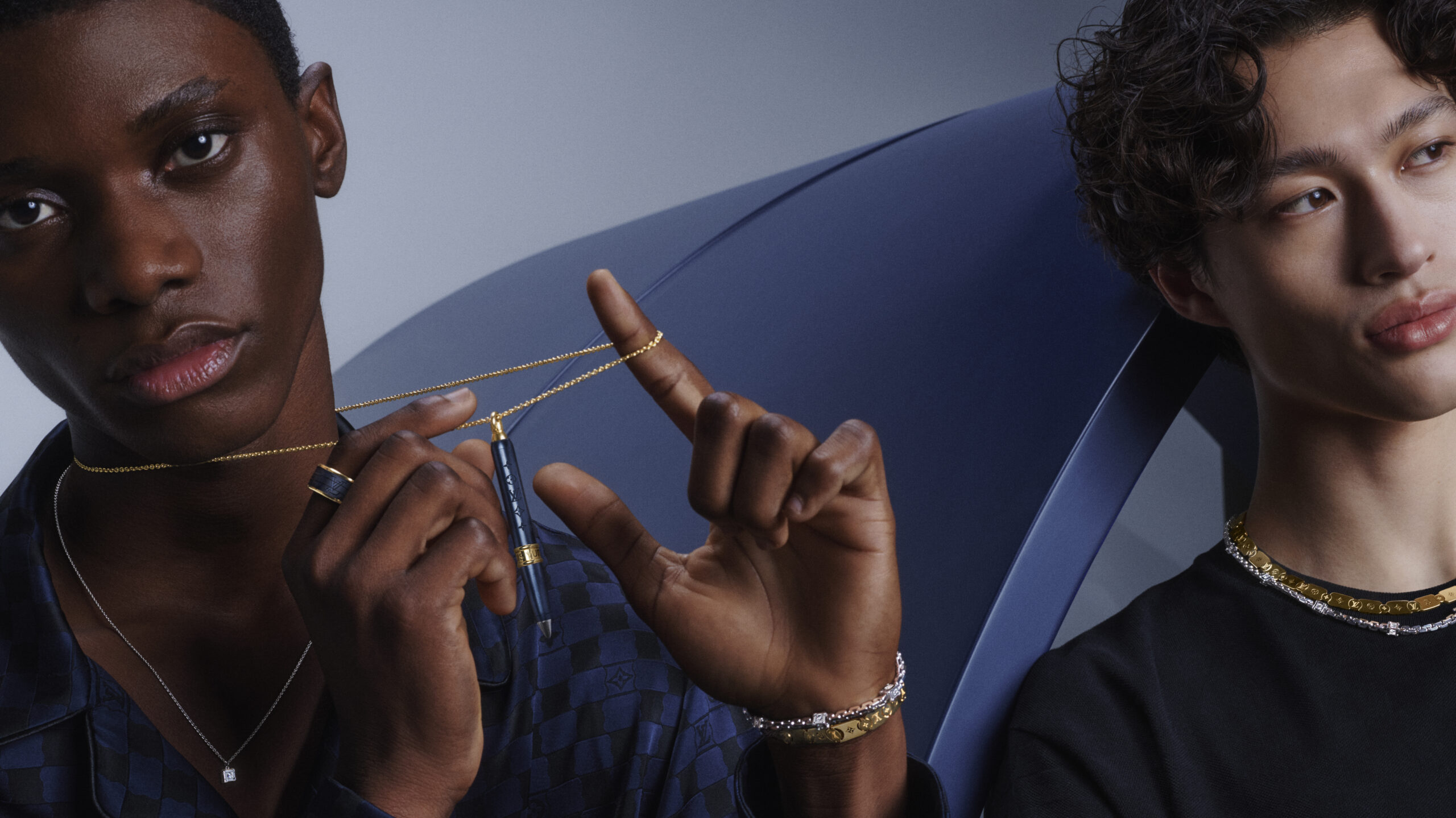
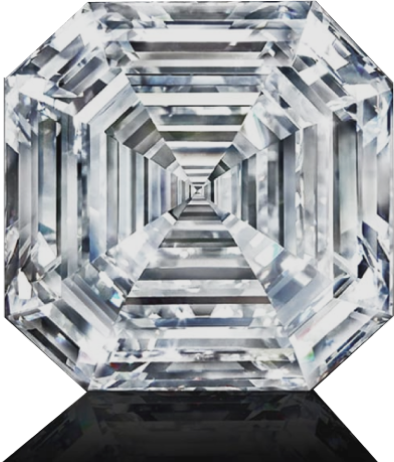
Latest Stories
Add articles and images to your favourites. Just
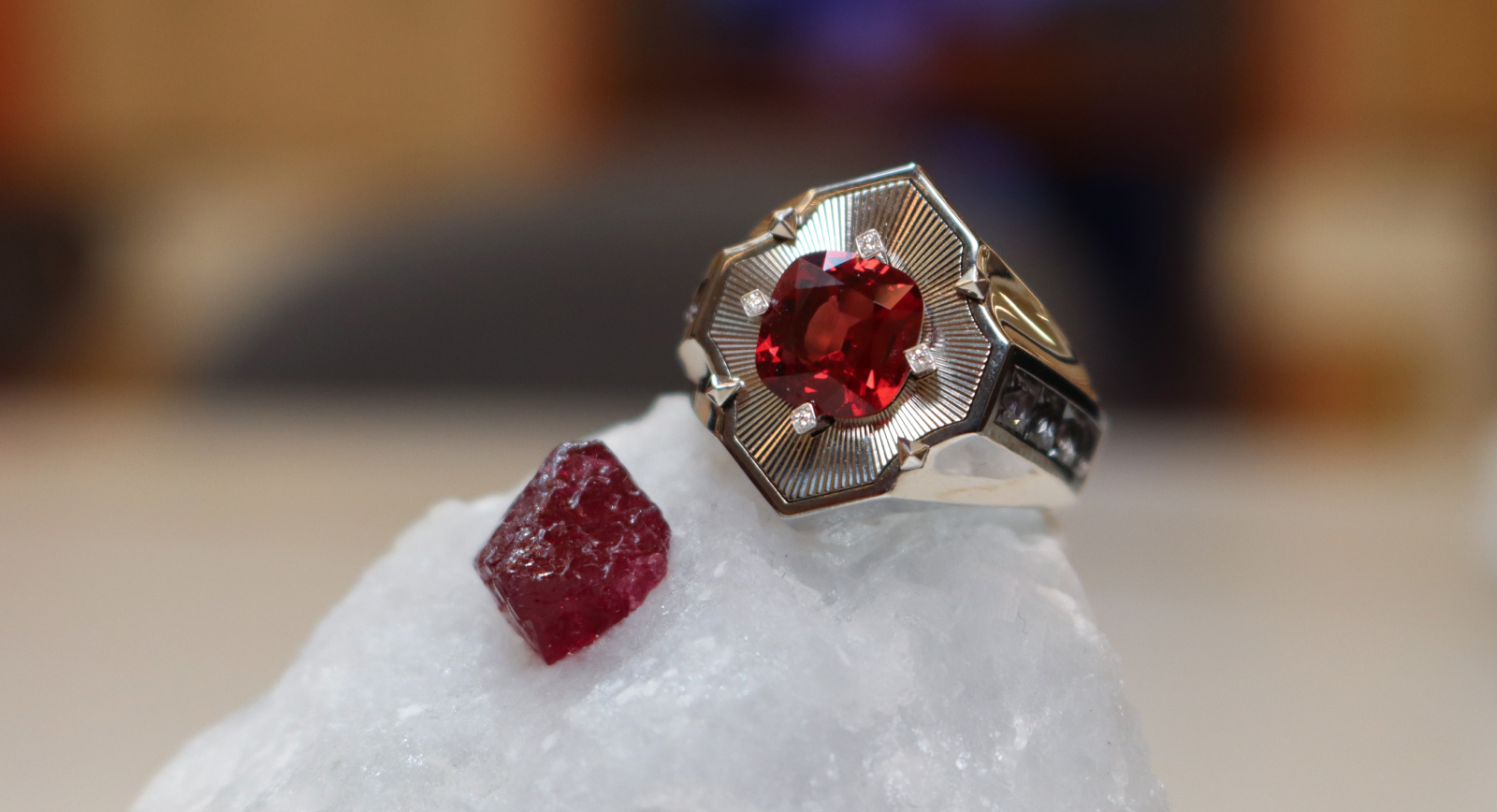
Jeweller of the Month:MADLY Gems
Singaporean brand celebrates 10-year anniversary
Jewels Katerina Perez Loves
Continue Reading
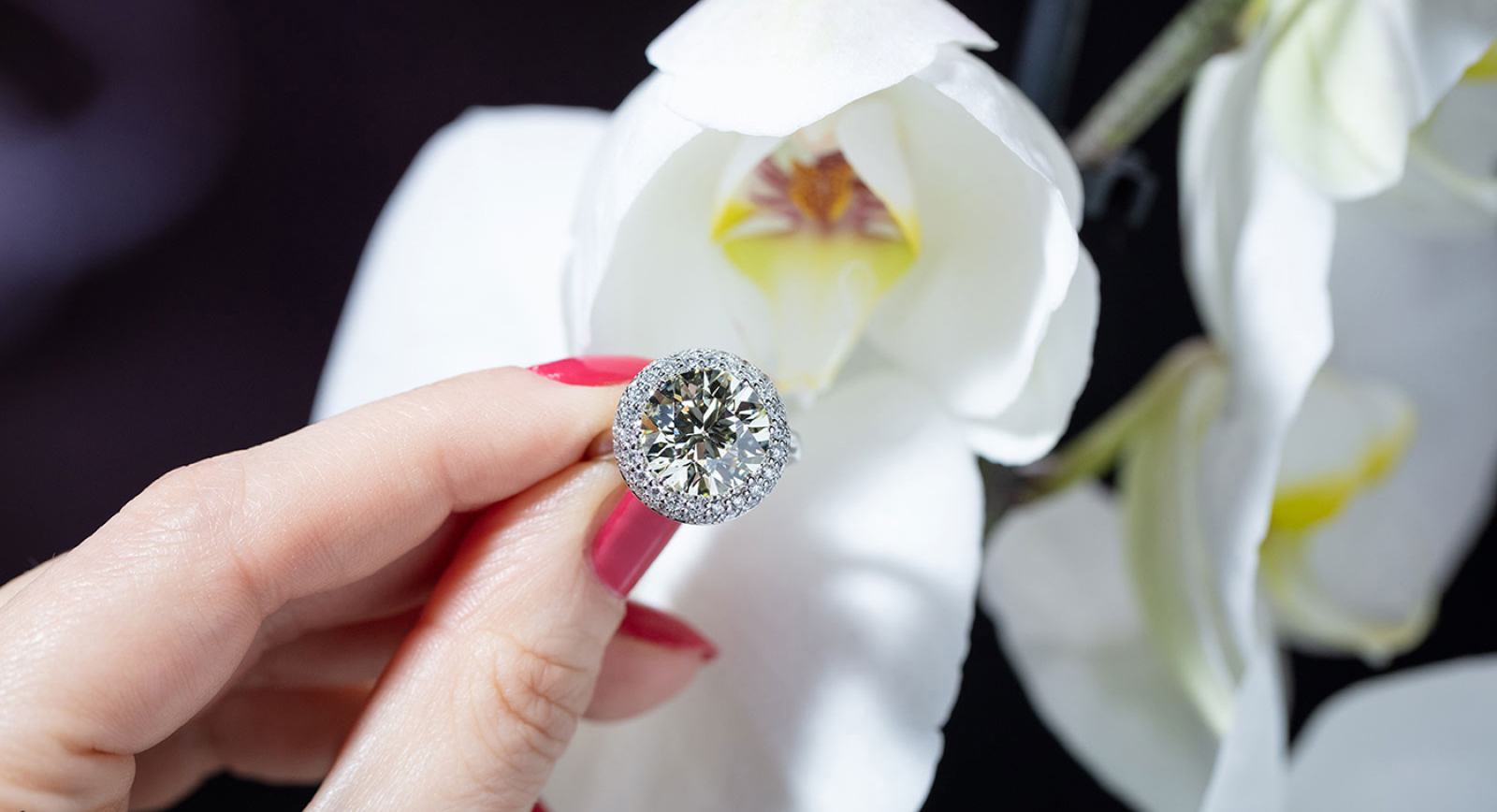
Ask Katerina:Diamond Jewellery Styling Tips for Modern Dressing
Here are some of the answers I gave during the presentation to aid your jewellery dressing…
Brand Focus:Van Cleef & Arpels
Jewellery Insights straight to your inbox
